Known as the Venice of the North, Bruges is a medieval paradise with wide canals, quaint cobblestone alleyways, unrivalled Gothic architecture and an utterly enchanting atmosphere. But with so much to see and do, it can be challenging to know where to start. That’s why we’ve put together this 2-day itinerary, packed with tips and suggestions on how to spend the perfect 48 hours in Bruges. This guide will ensure you maximize your time in this beautiful city, from iconic landmarks to hidden gems.
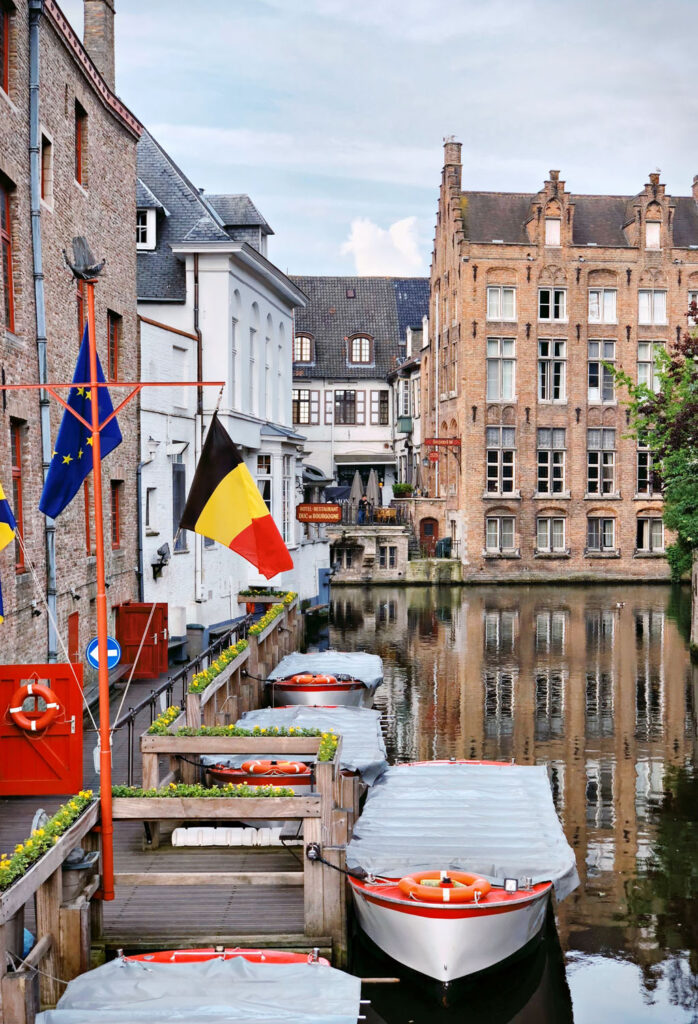
Map of 2-Days in Bruges Itinerary
Why Spend at Least 48 Hours in Bruges?
Many people visiting Bruges skip staying the night and instead choose to visit either on a day-trip bus tour or a quick stopover on their way through Belgium. But I strongly encourage you to stay at least one night in the city. This way, you can properly experience the atmosphere of this ancient city, both during the day and at night. The town’s true nature comes alive once the heavy loads of day-tripping tourists disappear in the later afternoon. Locals open their doors, and the city feels more than just a postcard but a living piece of history.
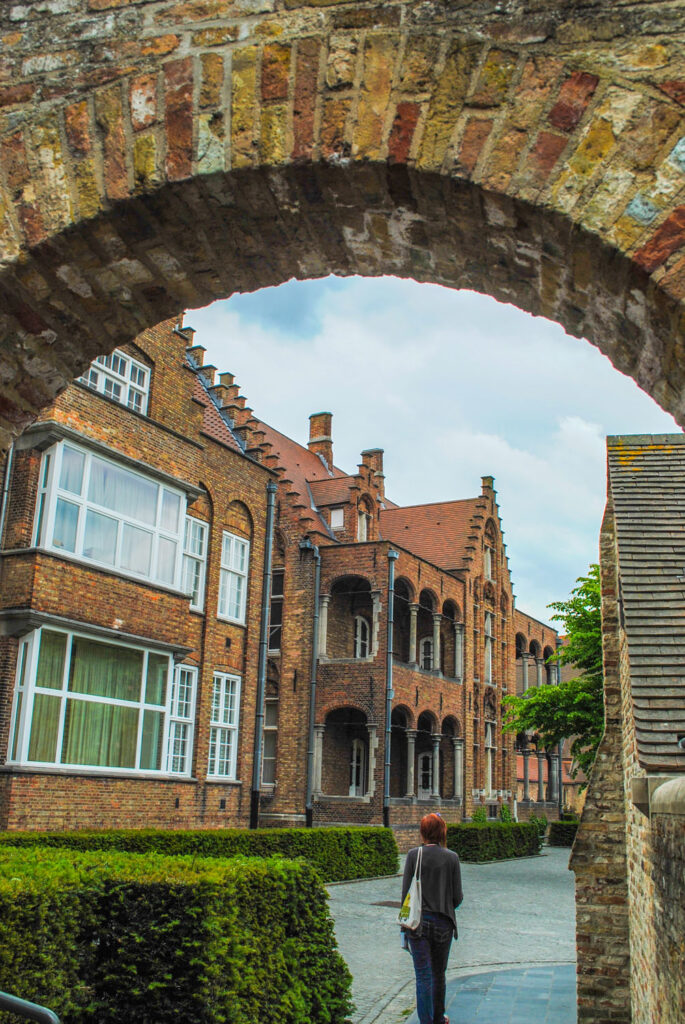
Where to Stay?
Budget Option: Hotel Fevery
Hotel Fevery in Bruges is a cozy, family-run retreat just a short walk from the city center. Known for its warm and homely atmosphere, this charming hotel offers comfortable, spotless rooms and a delicious breakfast. Guests appreciate the friendly, attentive staff who go above and beyond to ensure a pleasant stay, making Hotel Fevery a perfect blend of comfort and convenience for a memorable visit to Bruges.
Mid-Range Option: Boutique Hotel Sablon
Boutique Hotel Sablon is a stylish four-star hotel located just five minutes from Grote Markt square. The hotel offers plush suites with freestanding bathtubs and lounge areas. The decor combines modern style with historic elements, featuring contemporary art and a luxurious Living Room bar. It’s a perfect choice for travelers seeking a balance of comfort and elegance without breaking the bank.
Luxury Option: Hotel De Orangerie
For a more luxurious stay, consider Hotel De Orangerie. This boutique hotel is set in a beautifully restored 15th-century building along the Den Dijver canal. The hotel offers elegant rooms with antique furnishings and modern amenities. Guests can enjoy high tea in the plush dining room or on the terrace by the canal. The hotel’s central location makes it easy to explore Bruges’ top attractions.
History of Bruges
Bruges is not just a gothic-looking town; it is a gothic town. The streets are still lined with stones older than perhaps even my home country, and even the most ubiquitous family home looks like a gothic paradise. Bruges is a UNESCO-protected city, and as such, historians ensure that everything remains unchanged from its perpetual state of gothic opulence. Any renovations undertaken to protect buildings from the perils of old age are done with lots of research and employ only old materials to fix or repair any damage.
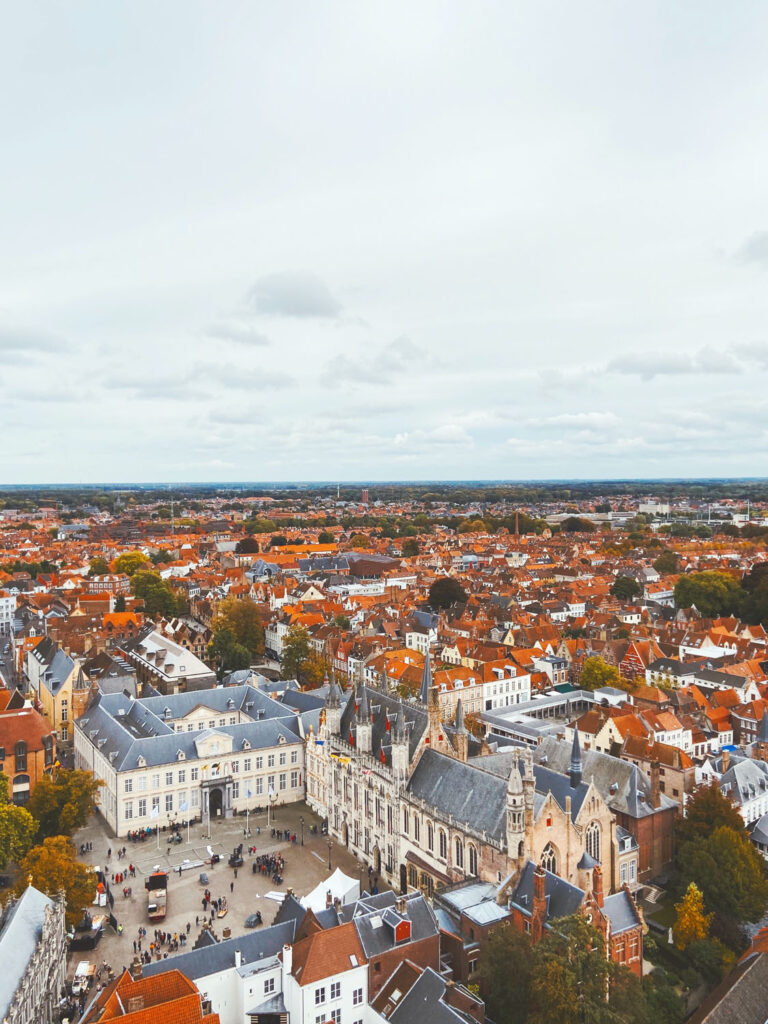
Bruges first established itself as a settlement in the 9th century. Since Bruges was a city settled on the river, connected to the North Sea, it immediately became a hub for international trade. The name Bruges is derived from the word Bryggia, an old Scandinavian word meaning harbour. Bruges was northwest Europe’s most important trade centre in the Middle Ages. It specialized in Flemish cloth, one of the most essential products in medieval times, as it was used to sew clothing for everyone from villagers to the royal family. Because the cloth market was exploding nationwide, more and more money poured into the city. The overwhelming wealth meant Bruges could build some of Europe’s most impressive pieces of medieval architecture.
The Growth of the City of Bruges
Throughout the 15th and 16th centuries, Bruges fluctuated under an ever-changing economy. While other European cities were able to expand, Bruges remained a small town. It couldn’t keep up with the worldwide growth and eventually lost its position as the leading trade city to Antwerp, with a population that doubled its own. Bruges slowly fell out of the limelight and disappeared from European high society.
In the 1800s, Bruges became the most impoverished city in Belgium as all trade routes into the city had shut. It is perhaps this period of poverty that we have to thank for the preservation of the city’s historic architecture. There was no money for renovations, expansion or modernization. In the mid-19th century, when the tourism industry started to creep outside the major cities into the countryside, people began discovering this untouched town gem. People from all over fell in love with the historic-artistic culture they found here, left untouched by urbanization.
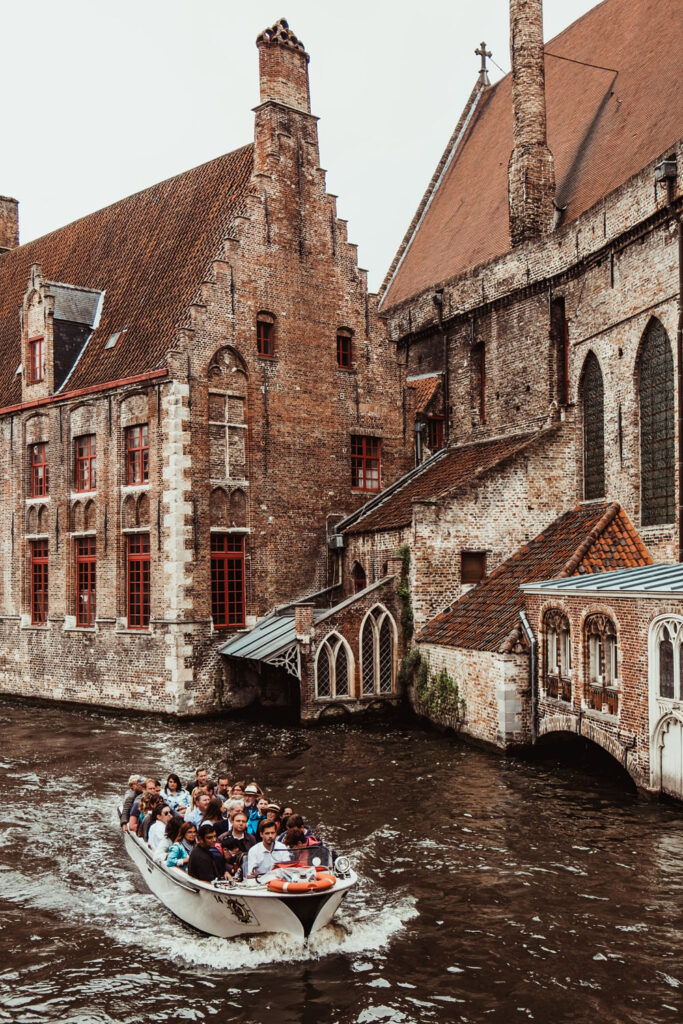
Day One in Bruges
The Grote Markt
The best place to start your tour is in the Grote Markt, which serves as the centre of Bruges. It seems fitting to begin your journey in the area that brought Bruges all its wealth. The first known marketplace was built here in the 10th century. Later, in the 12th century, a wooden market hall was developed to help house fish, cloth imports, and exports. The square turned from a simple shopping area into a meeting place for jousting tournaments, weddings, royal parades and even executions. The square is still used today as a marketplace despite the passage of time.
In 1996, the square was converted into a pedestrian zone where horse-drawn carriages and bicycles were the only modes of transportation allowed. Tourists can wander and gaze up at the buildings around them without fear of being hit by a car. And gaze up, you will!
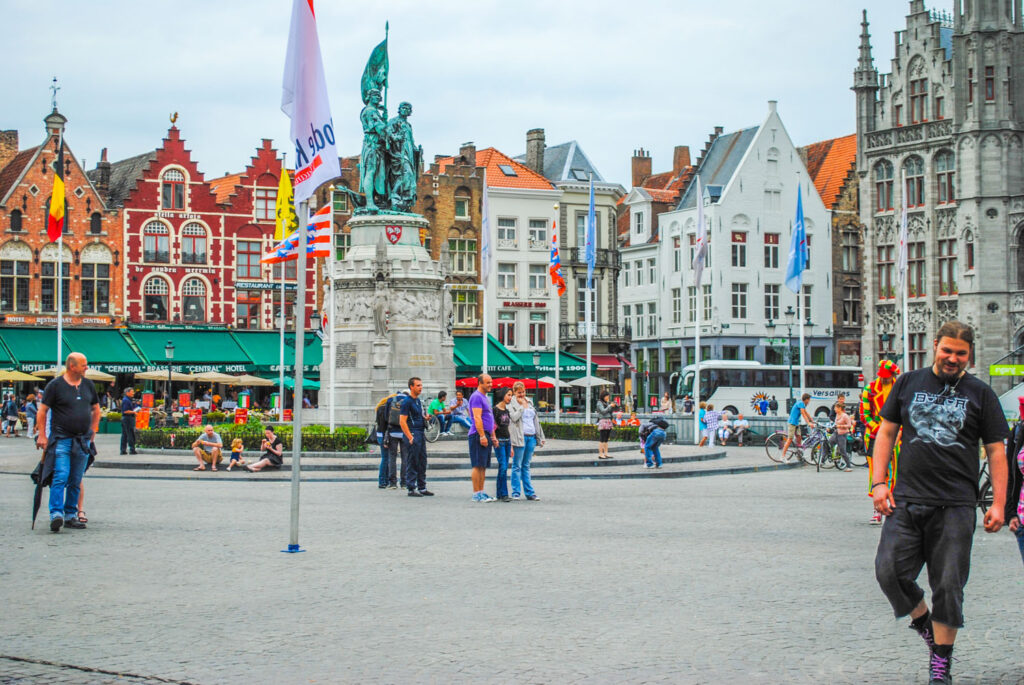
Bruges Belfy
Looming over Markt Square stands the Belfry Tower atop the infamous Cloth Hall. The Belfry was built in 1240 but needed to be rebuilt in 1280 after a fire ravaged the first building. If the octagonal-shaped top looks slightly unfinished, you’d be correct in thinking so. The tower was once topped with a great spire. There were various spires, but each was the victim of lightning strikes, reducing them all to ash. There is a famous poem by Henry Wadsworth Longfellow which goes, “In the marketplace of Bruges stands the Belfry old and brown; Thrice consumed and thrice rebuilt. Still, it watches o’er the town.”
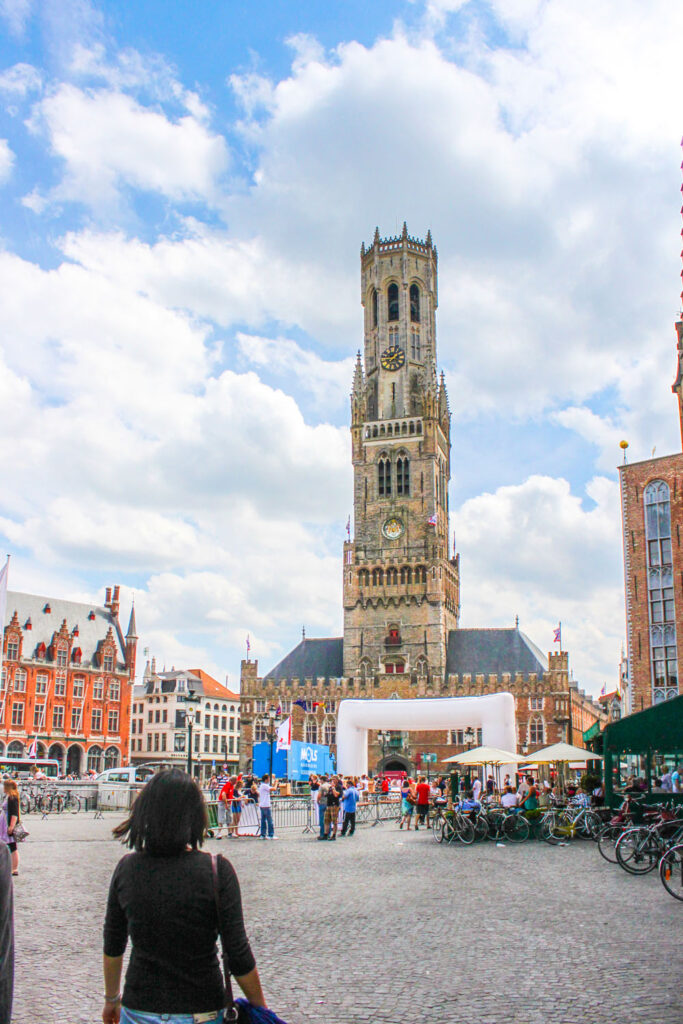
Bell in the Belfry
In the medieval ages, the Belfry’s bells were the only indicator citizens had to tell the start of the workday, signal for fire, or even begin a festival or event. In the 16th century, a 35-set carillon was installed in the tower. A carillon is a set of bells that could be played using a keyboard below the tower, creating a more musical sound than a few single bells rung from ropes ever could.
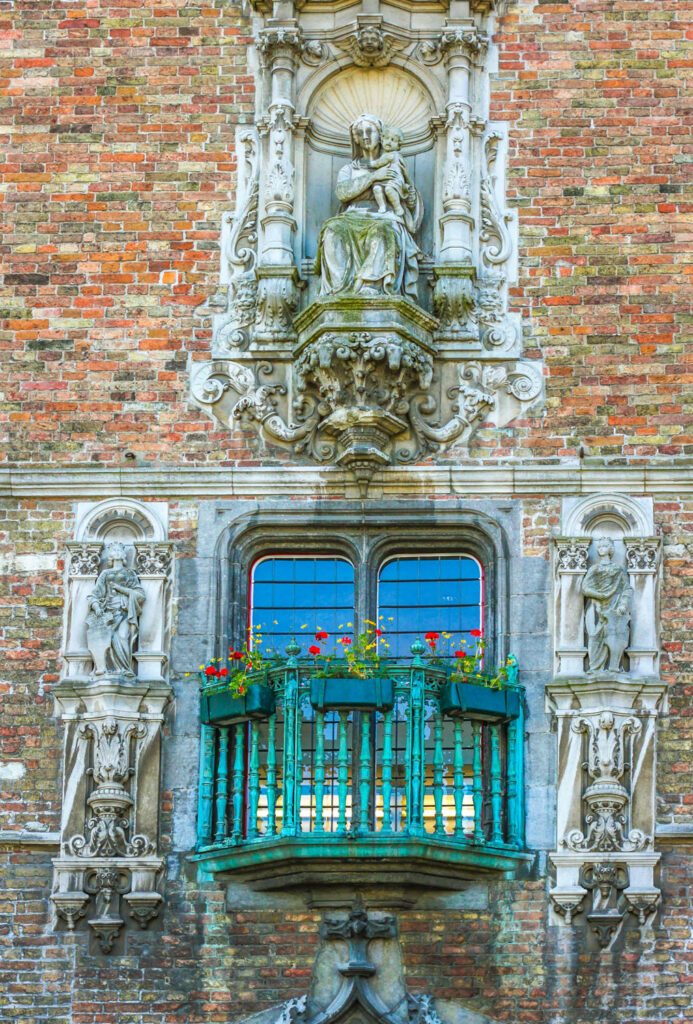
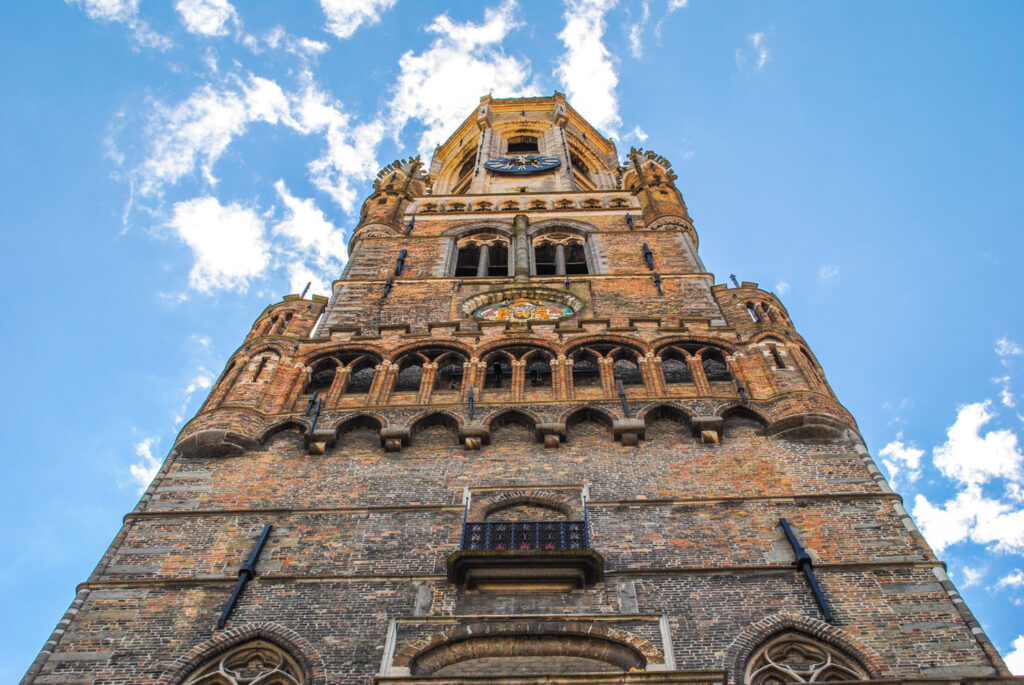
You can still climb the 366 steps to the top of the tower, as patrolmen once did, to look out for fires that could have destroyed this incredible city. The view from the top is unequalled and worth the time and effort.
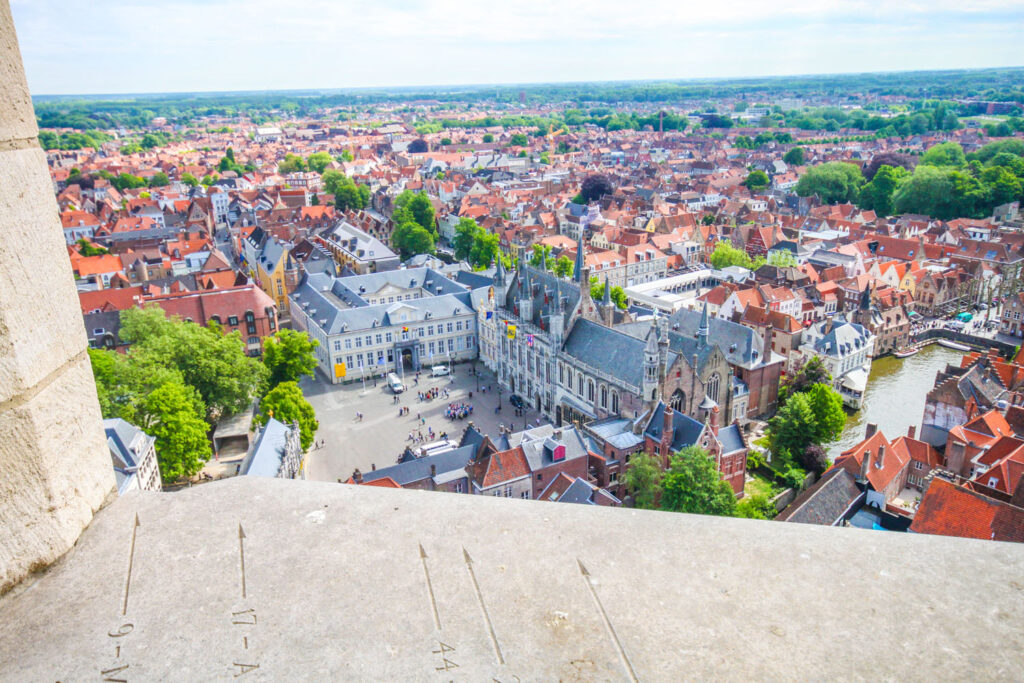
“French” Fries in Bruges
At the bottom of the Belfry Tower is a local French Fry vendor who serves some of the most delicious Belgian fries. There are ongoing disputes over the term “french fries” and its origin. The Belgians insist it was them. The story goes that when American armies were stationed in Belgium, the Flemish military served them one of their favourite (and inexpensive) meals—fried potato strips.
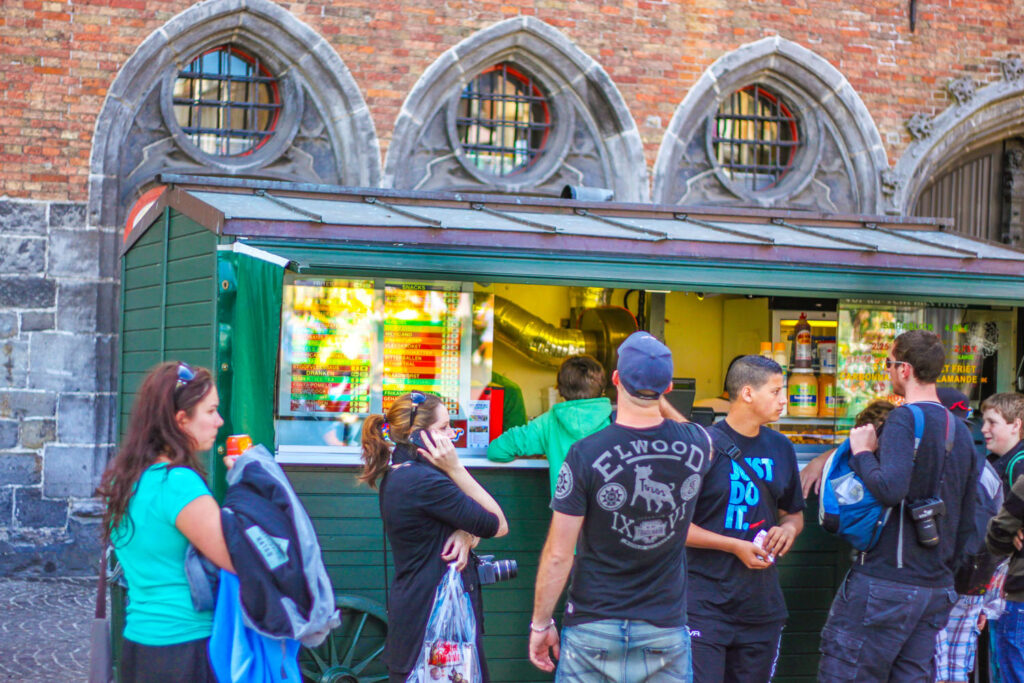
The American army LOVED them and took the recipe back home. They called them french fries since French was the local language in Belgium then, and the Americans assumed they were in France. While the French aren’t known for selling fries on the street, the Belgians have perfected the snack on the go. They serve them alongside mustard and mayonnaise dipping sauce, an oddly delicious side dish that is the perfect thing to eat to keep you going throughout your tour.
While chowing down on your snack, take a moment to study the brightly coloured buildings surrounding that square. Each one is topped with iconic crow-stepped gables, which have become the quintessential characteristic of Bruges.
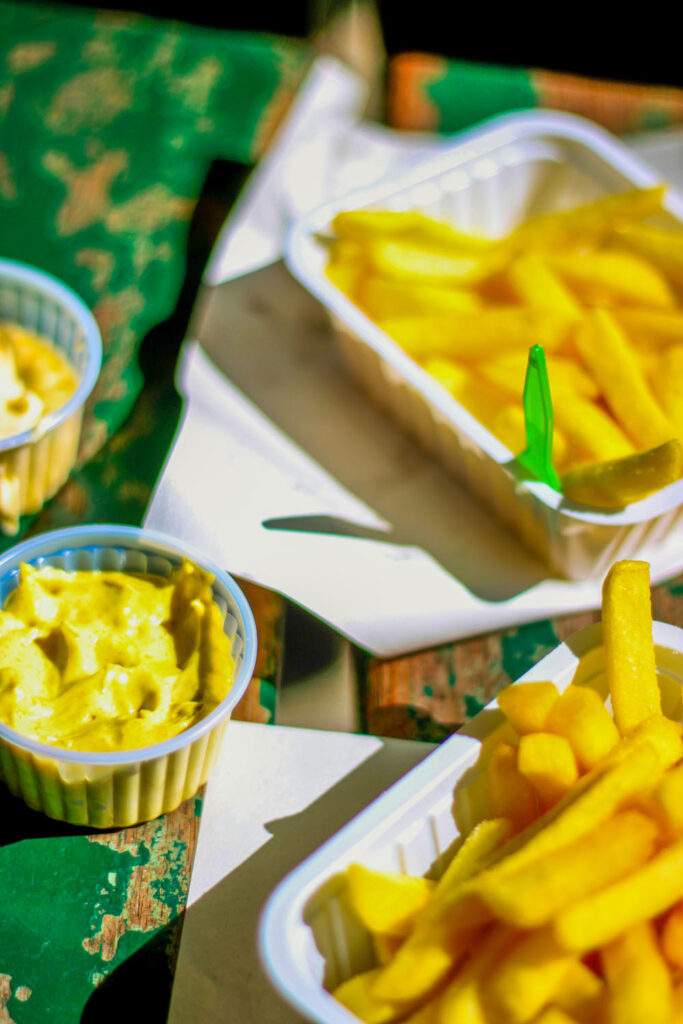
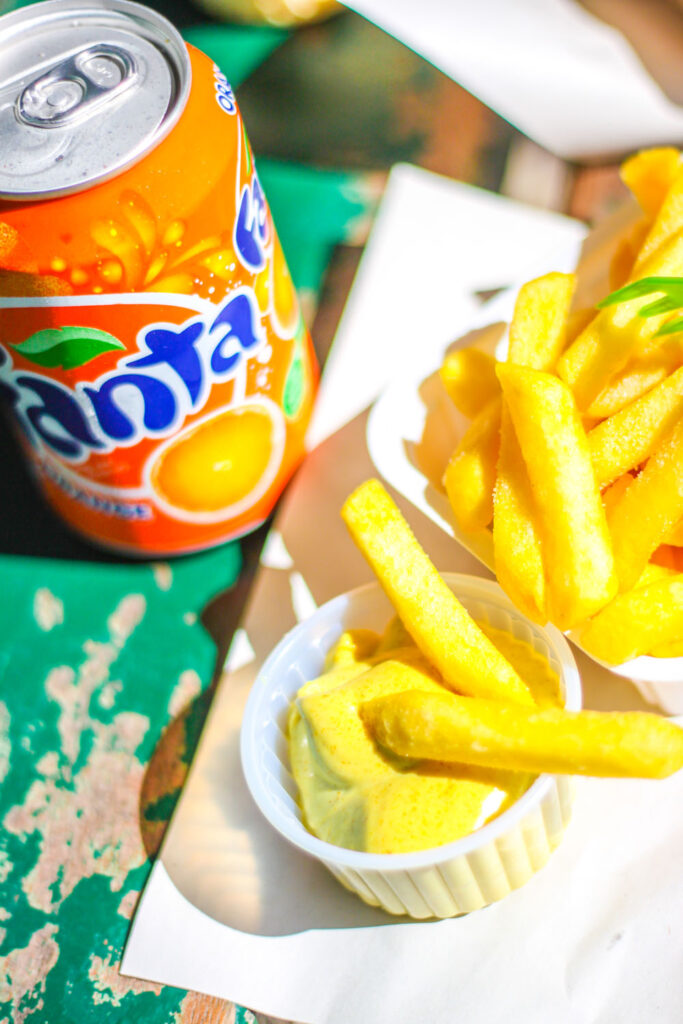
Statue of Jan Breydel and Pierter de Conick
Take a seat in the centre of the square, beneath the grand statue of Jan Breydel and Pieter de Coninck. These two men are local heroes known for leading the uprising against the invading French in 1302 and keeping Bruges a part of Belgium.
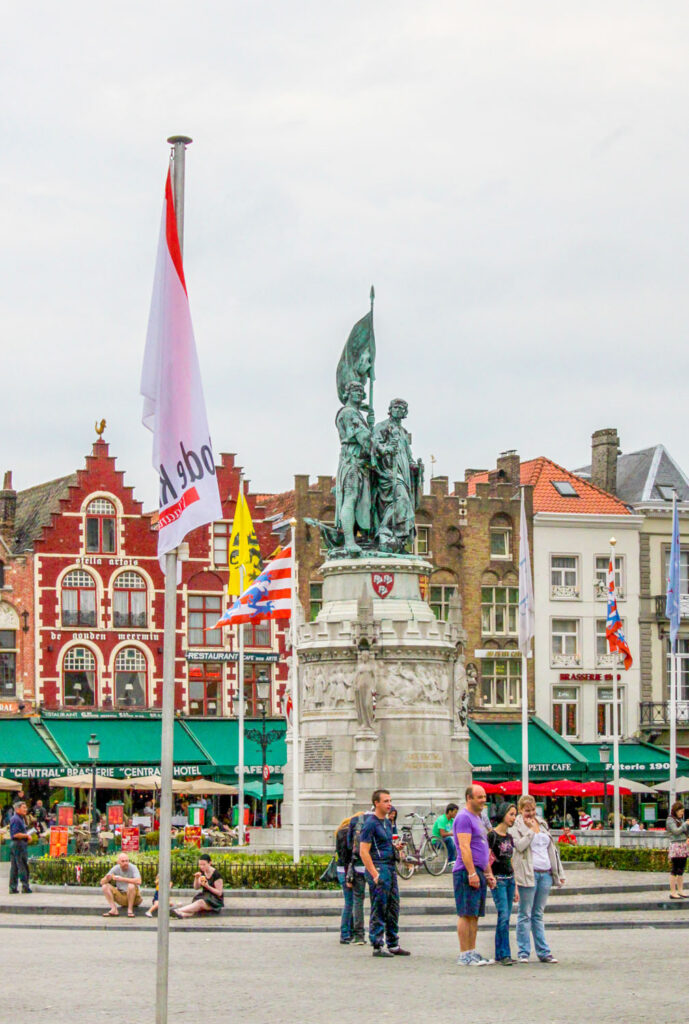
Provincial Hof
Across from the statue is the Provincial Hof or Provincial Court. The building now houses the government of West Flander and a local post office, but hundreds of years ago, it was home to the largest port in Bruges. Initially built in 1294, it was demolished in 1787 and rebuilt in a neogothic style reminiscent of its original Gothic architecture. One of the most iconic parts of its design is the bright red dormer windows, which pop out of the stone grey roof.
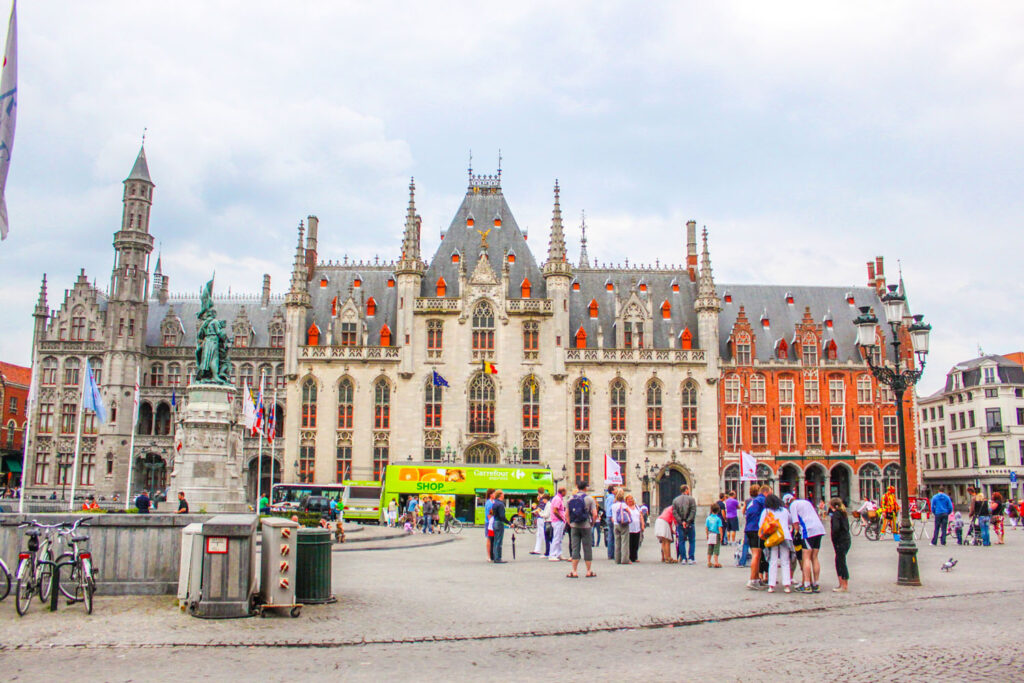
Hendrik and Gustaaf Pickery designed all the interior decorations; intricate stained glass windows and exquisite ironwork cover the rooms like wild vines. The statues and murals within depict scenes of famous personalities from West Flanders and provide a visual history of the building of their great city.
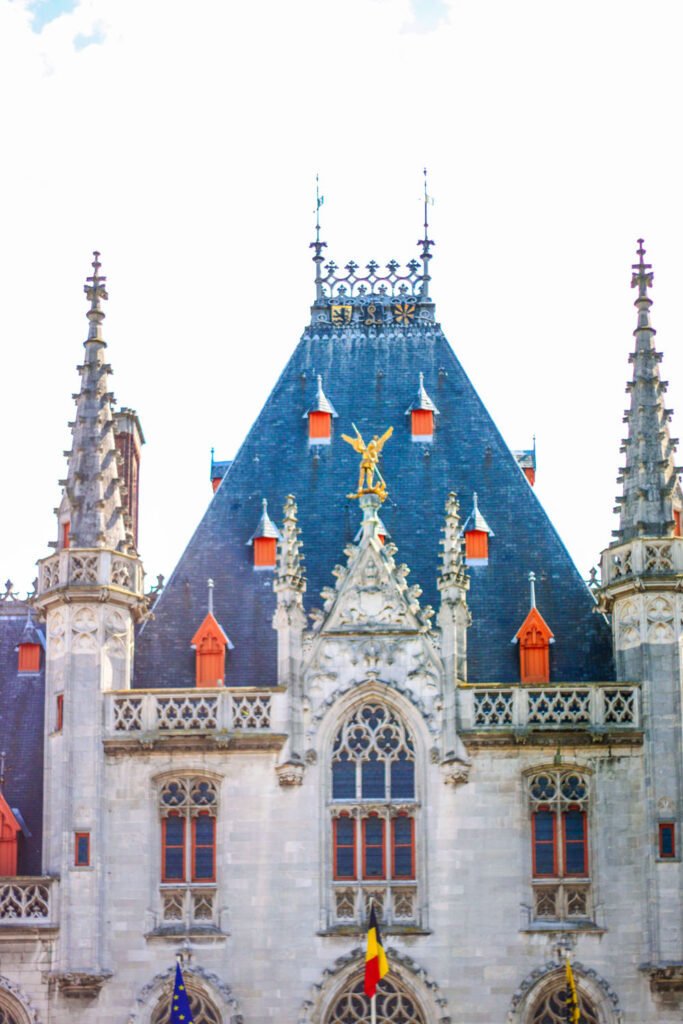
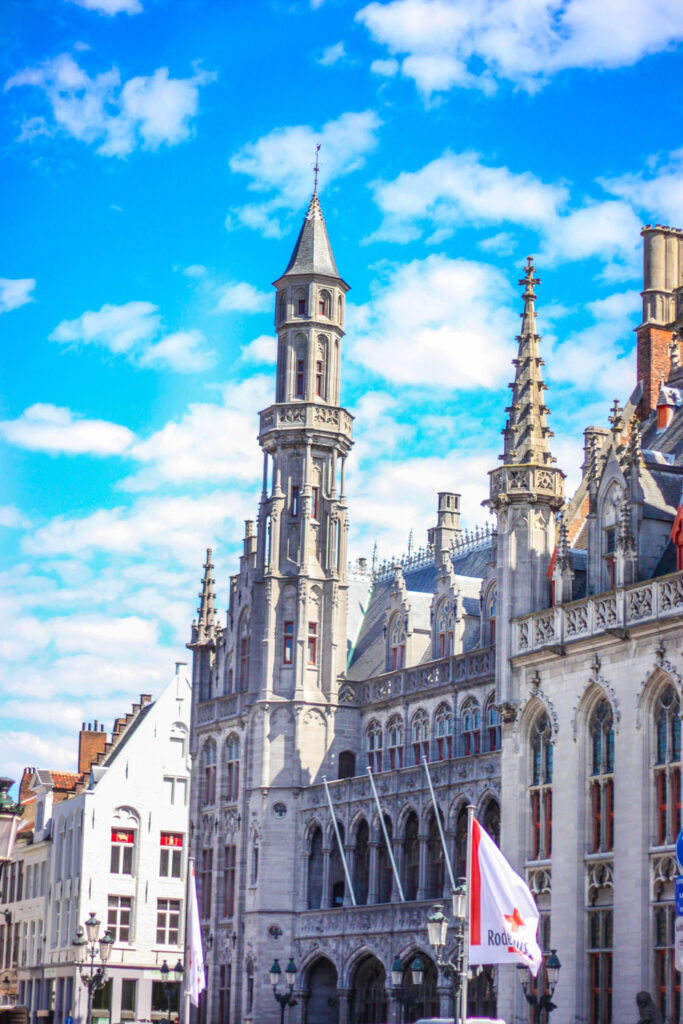
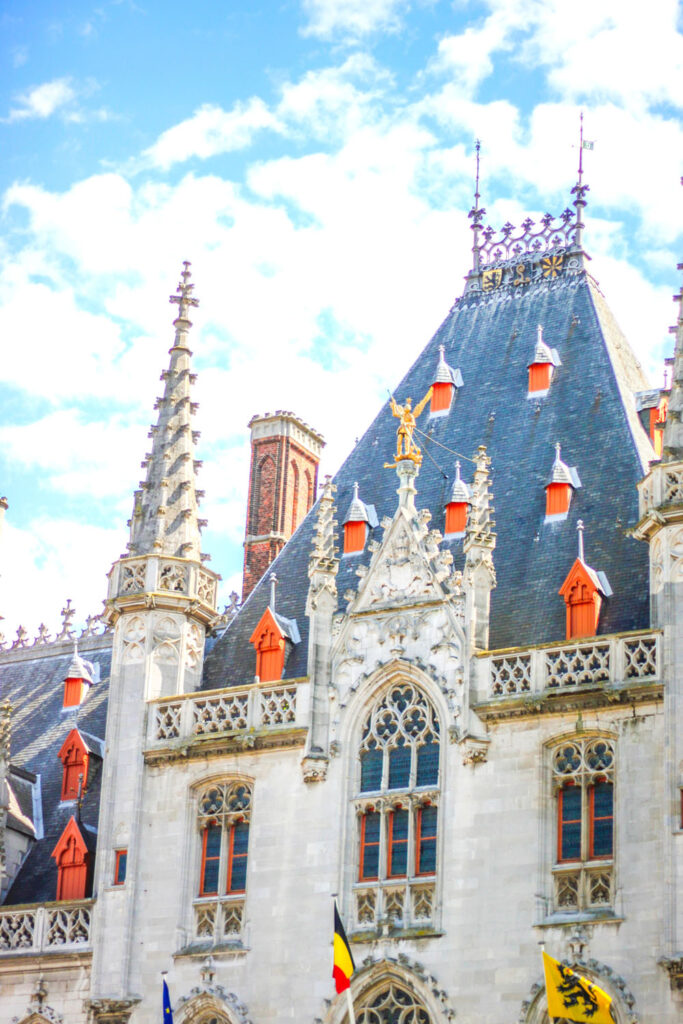
Chocolatier Dumon
Dumon Chocolates are among the most popular souvenirs people bring home from Bruges. Belgium is known worldwide for its chocolate creations, and Dumon has found a way to perfect the art. Established in 1992, this family-run business expanded around Belgium, but their first family-run shop was in Bruges.
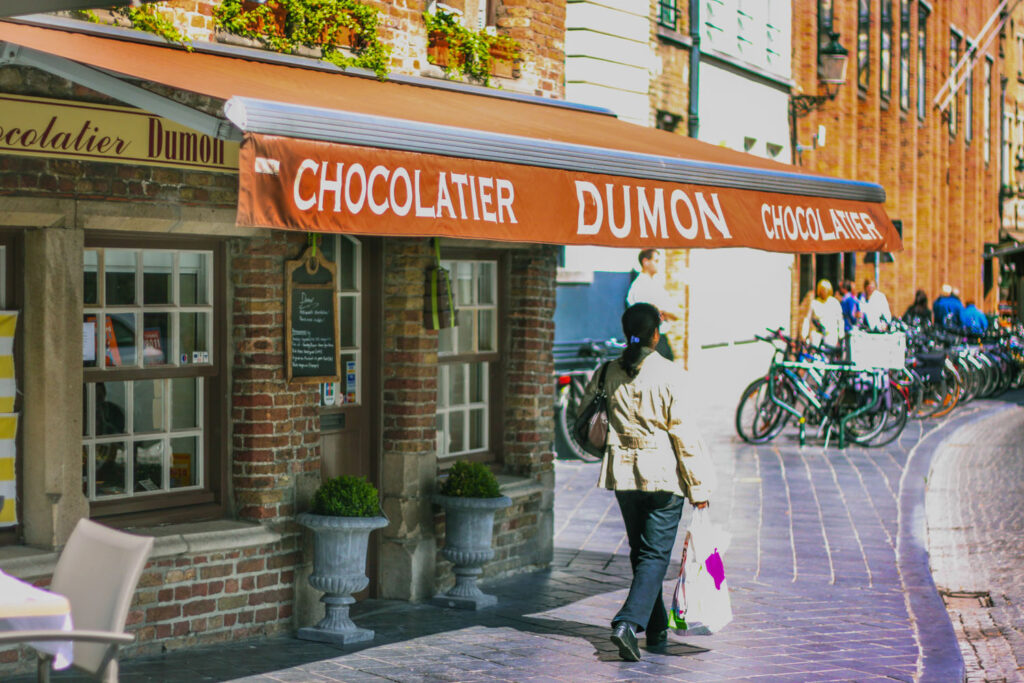
As you open the door, you are overwhelmed with melting chocolate’s sweet and slightly bitter scent. The tiny shop is almost no wider than arm’s length but is charmingly cluttered. Chocolates glisten behind glass cabinets, and you can’t help but start to drool. While there are no labels, the kind employees (all family members) will lovingly tell you about all the different kinds of chocolate and prepare a customized box with all your favourites. They speak English in addition to French and Belgian, but if you can’t communicate, you can’t go wrong with anything inside.
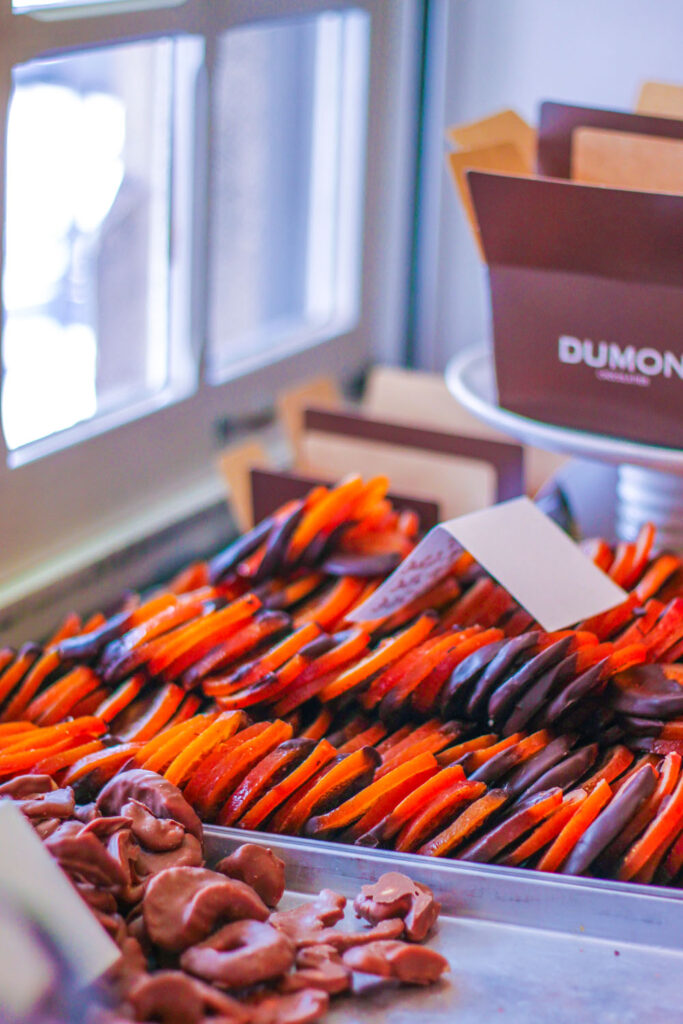
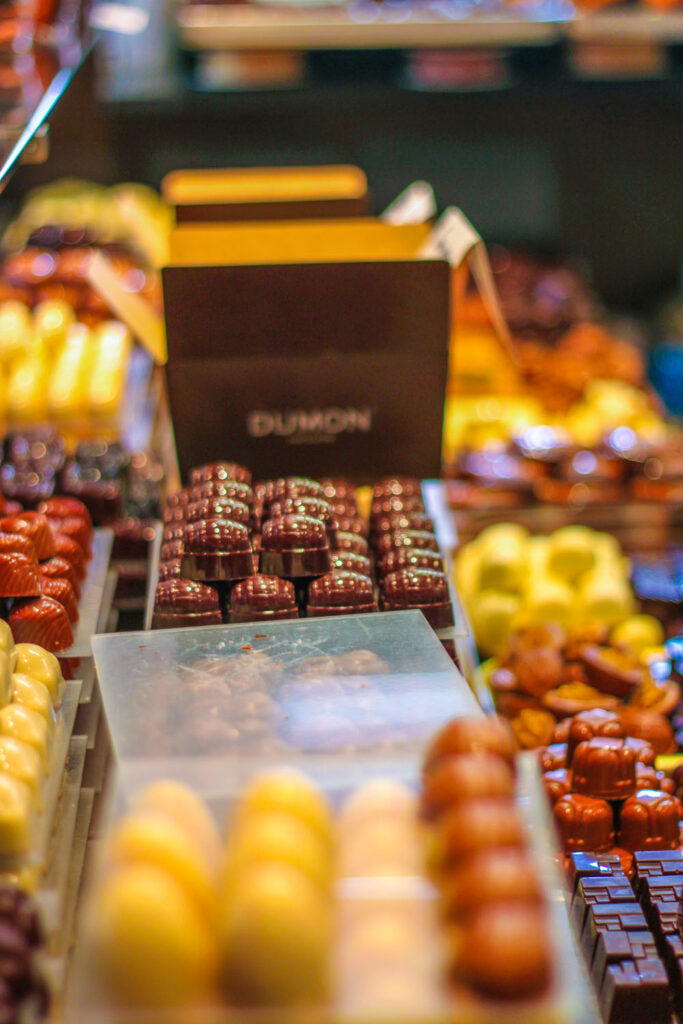
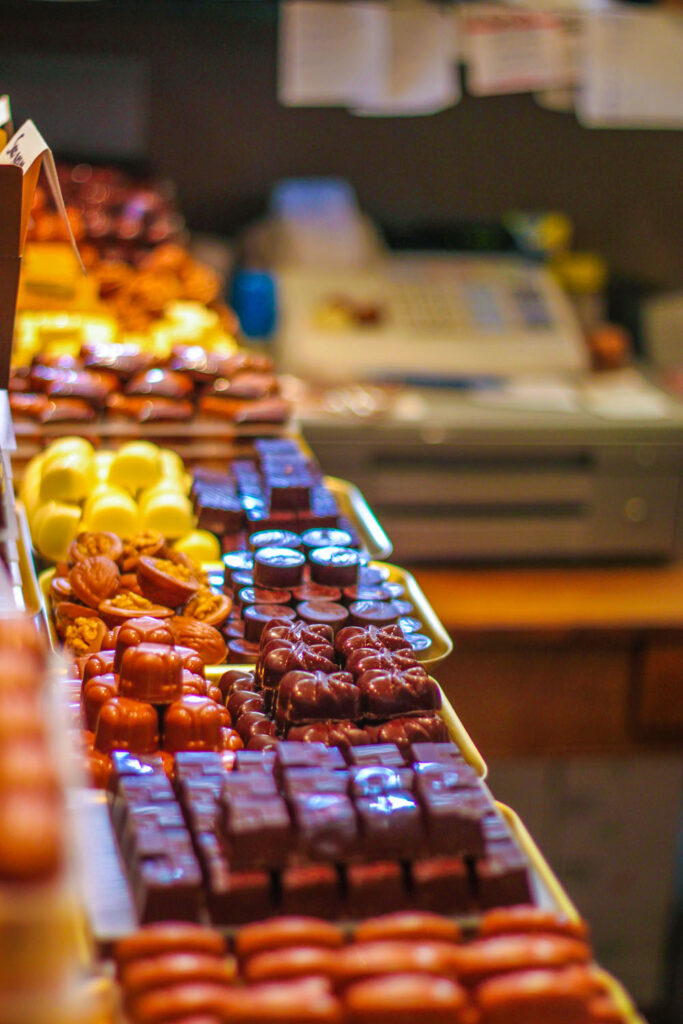
Hof Bladelin
Walking past Dumon, along the narrow streets and alleyways, you come upon Hof Bladelin. Hof Bladelin was once an aristocratic mansion, which has now been converted into a home for the elderly and a small museum. The Hof Bladelin was initially built in 1451 as the house of Pieter Bladelin and his wife, Margaret of Vagewierre. Pieter was the counsellor and treasurer for Philip the Good, the Duke of Burgundy.
At the time, he was one of the wealthiest men in Bruges and wanted to build a house, which reflected his enormous wealth. The Bladelins had no children, and after their death, the house came up for auction in 1472. It was purchased by the Medicis, a powerful Florentine banking family known for coveting the most beautiful pieces of art and architecture from the world’s greatest artists.
The Hof Bladelin has the architectural design of a Gothic castle. The Renaissance courtyard was designed in Italian and added to the building by the Medici family. There are still stone medallion portraits of Lorenzo de Medici and his wife in the courtyard. The ribbed vaulted ceiling in the interiors has some unique corbels adorned with scenes depicting Bladelin’s duties and the life of St. Alphege of Canterbury.
The Poortersloge
The Poortersloge, or Burgher’s Lodge, is an exemplary model of Gothic architecture in Bruges. It was built at the end of the 14th century and served as a meeting place for the burghers (town or city’s citizens). One can admire its magnificent façade, decorated with stone figures; one is of the legendary bear, Beertje van de Logie, dated 1417. In the past, banquets and festivities were held here; nowadays, the building contains historical documents.
Cambrius
If you’re feeling peckish, stop off at the Cambrinus pub. The building oozes history. The original pub was built here in 1699, and despite a few updates, much of the place remains the same. When you arrive, the waiter will bring you a book the size of a dictionary with over 400 varieties of beer listed and vivid descriptions in various languages.
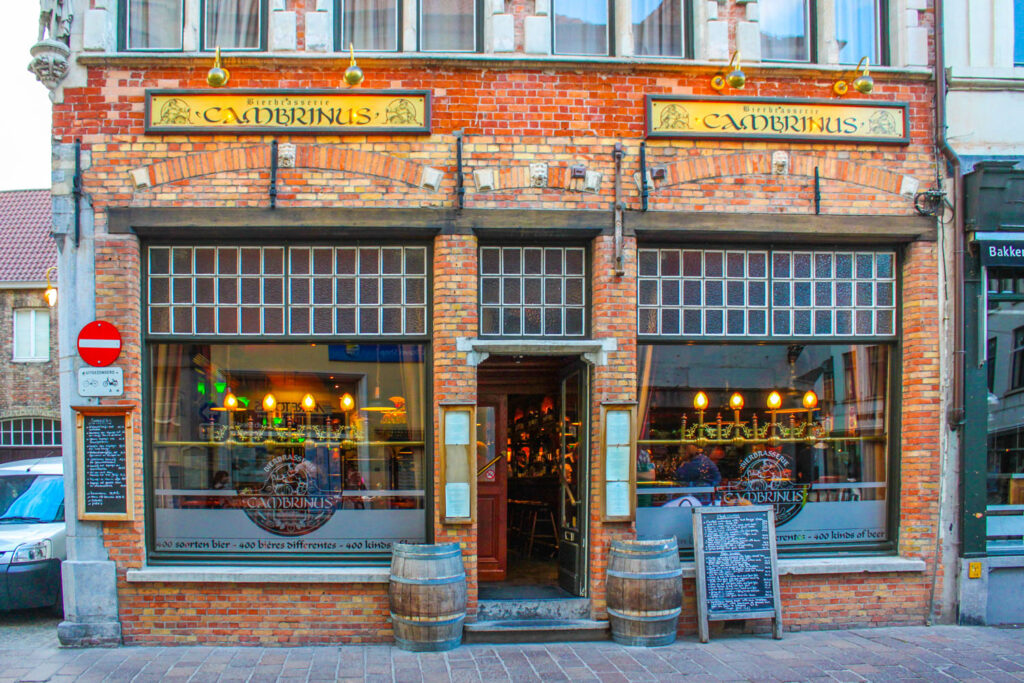
There truly is something for everyone. In addition to the best beer list in the country, their traditional Brugian food is also to die for. The rabbit stew is my favourite and will warm you up from the inside out if you are travelling in any of the colder months.
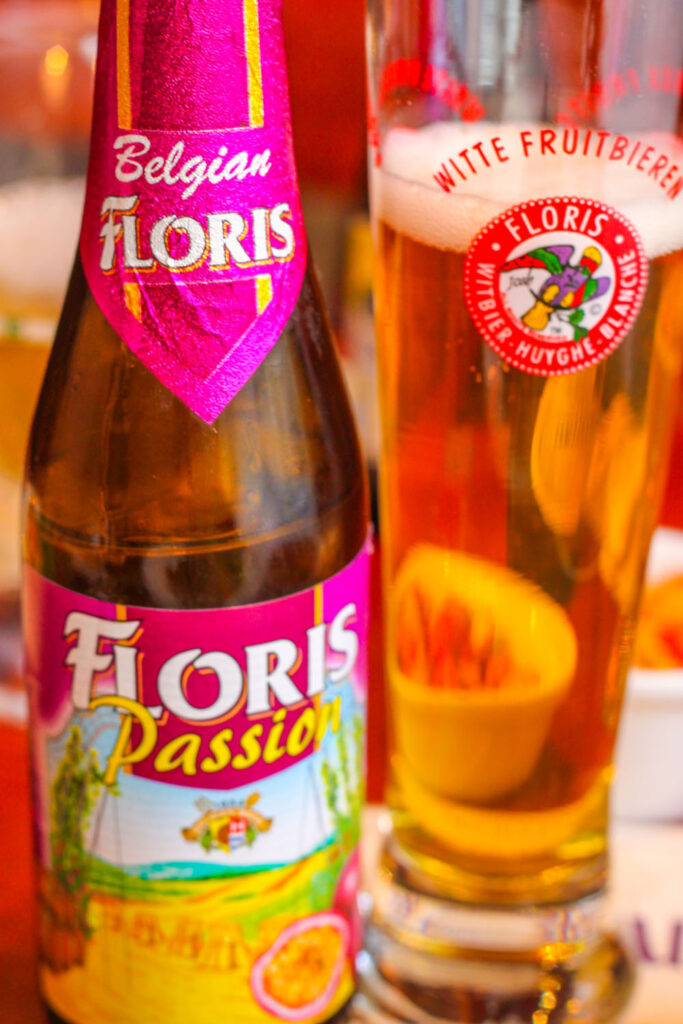
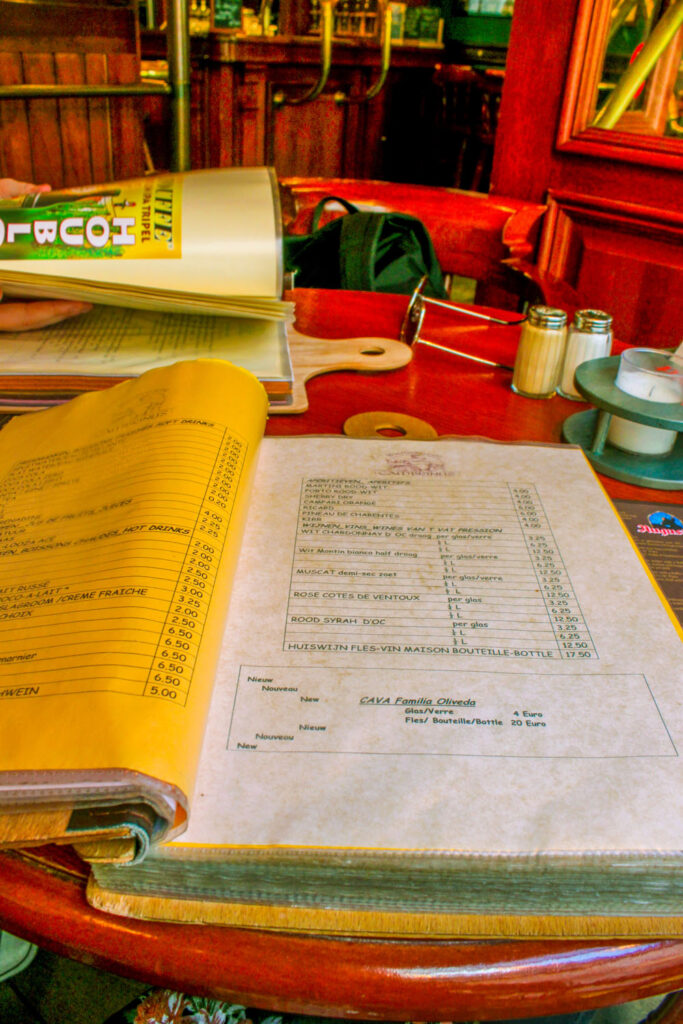
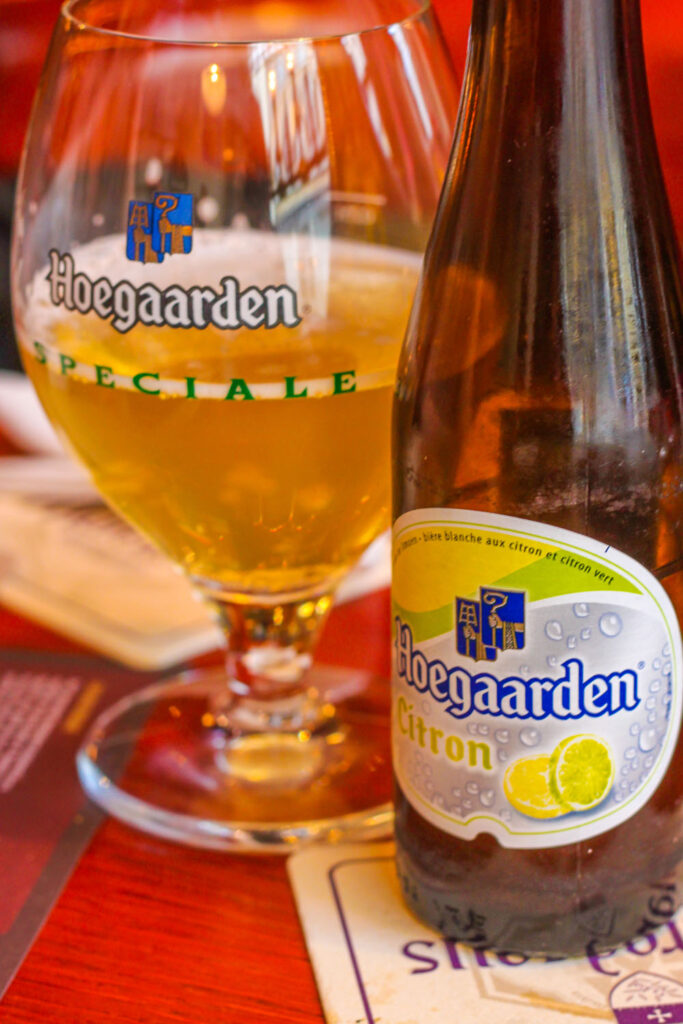
Burg Square
After lunch, make your way over to Burg Square. This square is one of the city’s most stunningly medieval parts. Architectural gems from the Gothic era to the Renaissance and the Neo-Classical Revival surround it from all sides.
Burg Town Hall
Burg Town Hall, or “Stadhuis,” is the oldest building in the square. It was built in 1376 in a truly Gothic fashion. Standing between the bright red-painted windowsills are statues of men from the Court of Flanders intermingled with biblical figures. Each one looked down at the townspeople below, guiding them in their daily lives.
Sandwiched between the Town Hall is the Palace of the Liberty, which once served as the Old Court House for over 200 years. Its brilliant white painted facade with gold trim is decorated like a cake, with the golden Lady of Justice statue as the cherry on top.
Basilica of the Holy Blood
The Basilica of the Holy Blood stands in the corner of the square, tucked away so tightly it almost seems to disappear. This 14th-century church holds one essential item, a vial of “Holy Blood,” believed to be drops of blood and water washed from the body of Christ.
Behind its dark, richly decorated facade hides an even more ornamental interior. The interior houses two chapels, each opposite the other. The upper chapel is the crown jewel of West Flanders in high Gothic style. From floor to ceiling, there are darkly painted murals depicting the Holy Trinity and various scenes of the journey of the Holy Blood Relic to Bruges. Vividly painted stained glass windows provide the only natural light inside the chapel. Little modern lighting has been installed inside to ensure the murals don’t fade with time.
Heilig-Bloedbasiliek
The Holy Blood relic is embedded in a rock-crystal vial and placed inside a glass cylinder framed with two golden crowns. It is only shown to the public on certain days of the week, so check the schedule if you’re making a pilgrimage just to see it. It is housed inside a silver tabernacle with a picture of the Lamb of God on the front when it is not displayed. In recent years, the validity of the vial has come under question, and investigations have shown that it was nothing more than a Byzantine perfume bottle from Constantinople. But to those who believe, no amount of science can deter them.
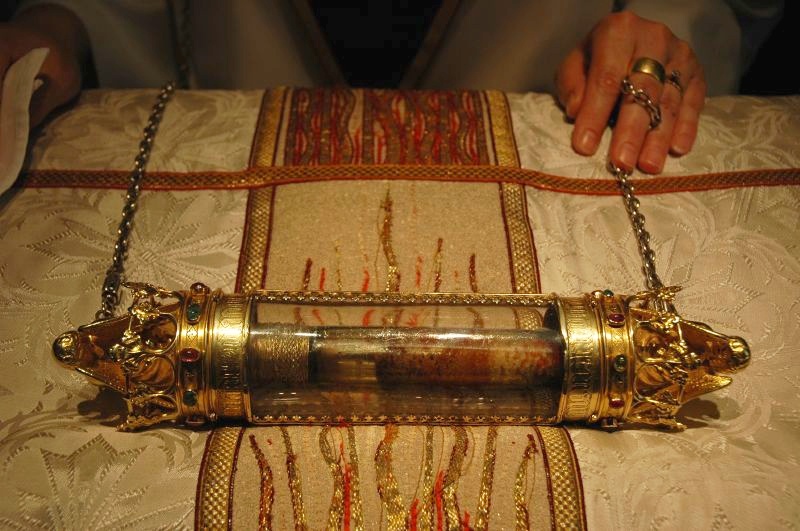
The lower chapel is a simple Romanesque church from the 12th century, the last Romanesque church in all of West Flanders. This chapel has been virtually unchanged since it was first built. The two chapels are connected, but a large brick staircase was built in 1533 in the Renaissance style, which was subsequently destroyed during the French WWII occupation but rebuilt in the 19th century.
Vismarkt
Across the bridge from Burg Square is the Vismarkt, or old Fish Market. The fish market was once located in Markt Square, but the smell of the fish was so intense that people around the square complained, so it was moved further east. The covered stone arcade was built in 1821. The market is only open from Wednesday to Saturday in the early morning, but you can visit the iconic stone structure any time of the day.
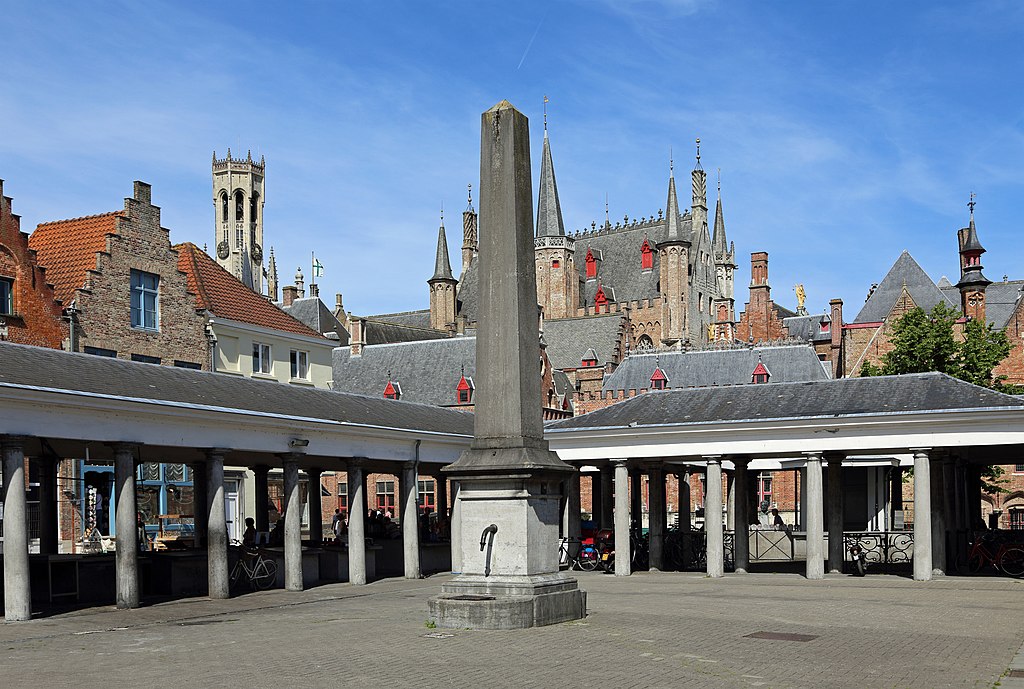
Dijver Canal
From the Fish Market, walk west along the Dijver Canal. The canal’s passageway from the fish market to Nieuwstraat is a classical view of Bruges you must see for yourself. Various restaurants along the canal are reasonably touristy but provide one of Bruges’s most beautiful scenes. If you just want to hop into one of their patios for a drink, I think the overpriced beer is well worth the view.
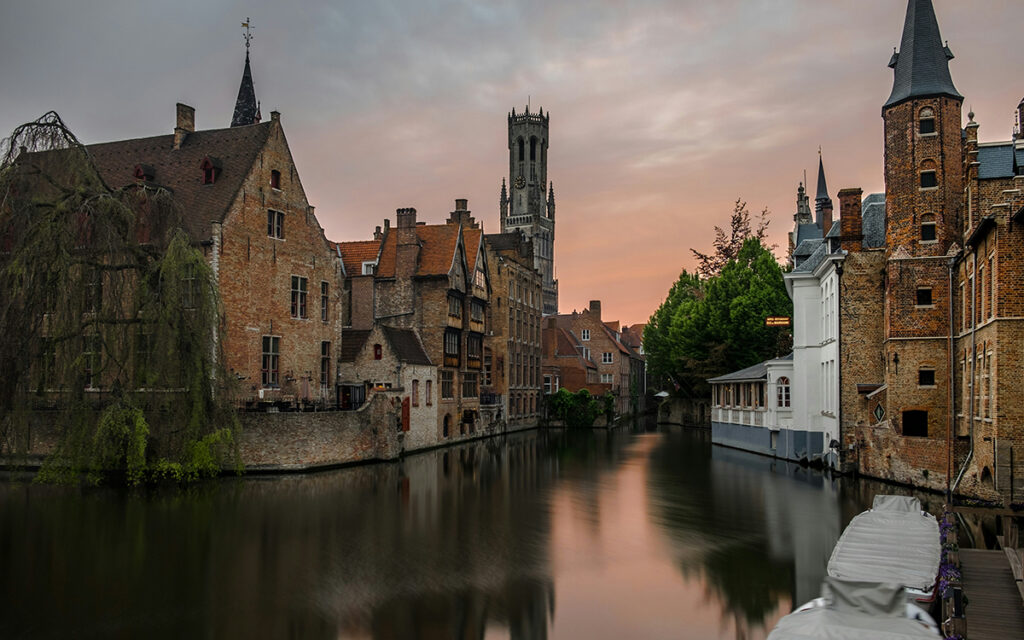
De Garre
To end your first day in Bruges, head to De Garre bar, nestled in a tiny alleyway. De Garre is a hidden gem in Bruges renowned for its exceptional house beer, the Tripel van De Garre. This robust and flavorful tripel, brewed exclusively for the pub, is a must-try for any beer enthusiast. The cozy and intimate atmosphere of De Garre, combined with its rich wooden decor, offers a perfect setting to enjoy this unique brew. The pub also serves a variety of other Belgian beers, making it an ideal spot to unwind and savour the local beer culture after a day of exploring the city.
Day Two in Bruges
Groeninge Museum
To start our second day in Bruges, we will head to the famous Groeninge Museum. The Groeninge Museum is an essential stop on your tour of Bruges as it gives you an introduction to Brugian art across six centuries.
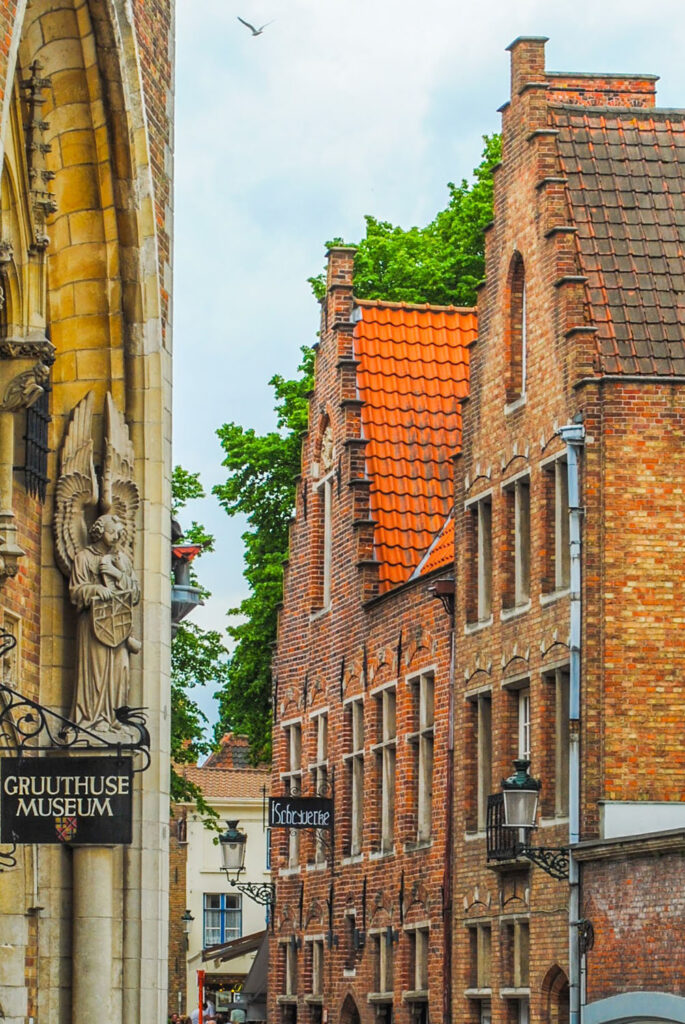
The Primitive Flemish style of painting is featured throughout the walls of museums. Flemish art isn’t classically considered exceedingly masterful since it sometimes seems slightly grotesque, raw, and explicit. Flemish painters always tried to emulate their Italian counterparts to achieve a dynamic perspective, but they didn’t have the technical skills to realize these effects. The result is images that appear almost warped but whose expressions are so genuine they leave a lasting impression on the people who view them.
Arents House Courtyard
Across from the Groeninge Museum, you’ll find the Arents House. Arents House was once an ancient manor belonging to the noble Arents family. It now hosts an extensive collection of paintings by the British artist Frank Brangwyn. While it might be worth a visit on a more extended tour to Bruges, today, we are merely exploring its courtyard. The small yard between the two medieval houses is the perfect place to stop and pause. Listen to the sounds of cobblestones underfoot.
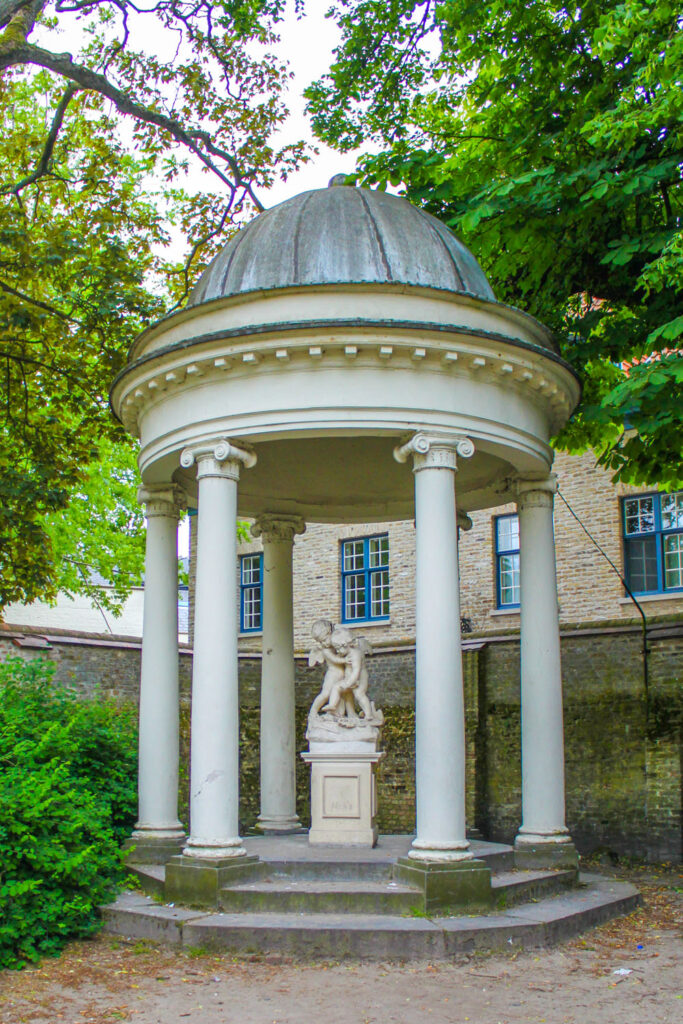
The trickle of water flows down the canal. From Arents Court, you have one of the most splendid views of the Church of Our Lady’s tower. If you’re lucky, you’ll hear the church bell rings across the street and the soft crowing of birds perched above. Four exciting sculptures by artist Rik Poot surround the courtyard, representing the “Four Apocalyptic Knights,” which are a great compliment to the artistic surroundings.
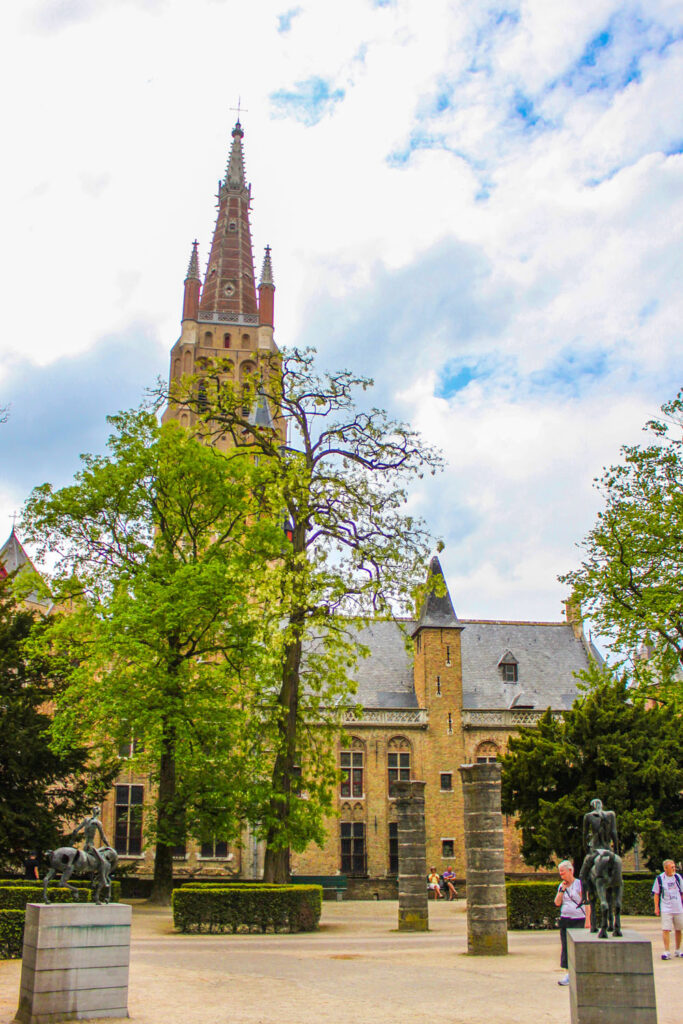
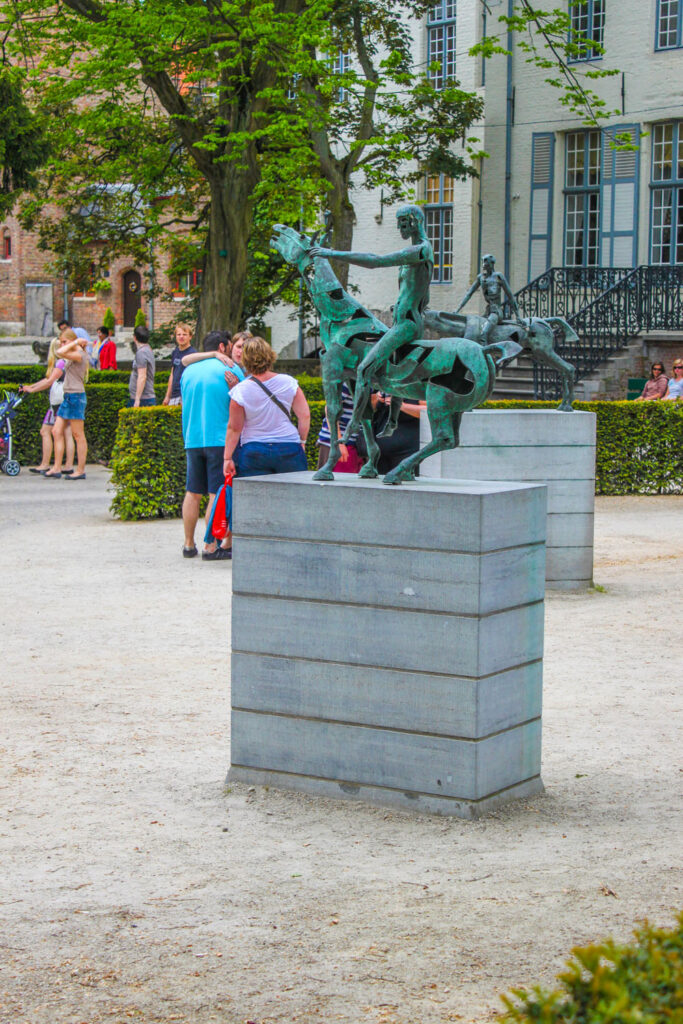
Bonifacius Bridge
Before heading to the Church of Our Lady, you’ll pass across the Bonifacius Bridge. Despite only dating from 1910, it is one of the most beautiful bridges in Bruges. The tightly interlaced cobblestones are red brick archways that provide the perfect frame for the church towers behind them. Standing on the bridge, you can watch tourists paddle up and down the canal.
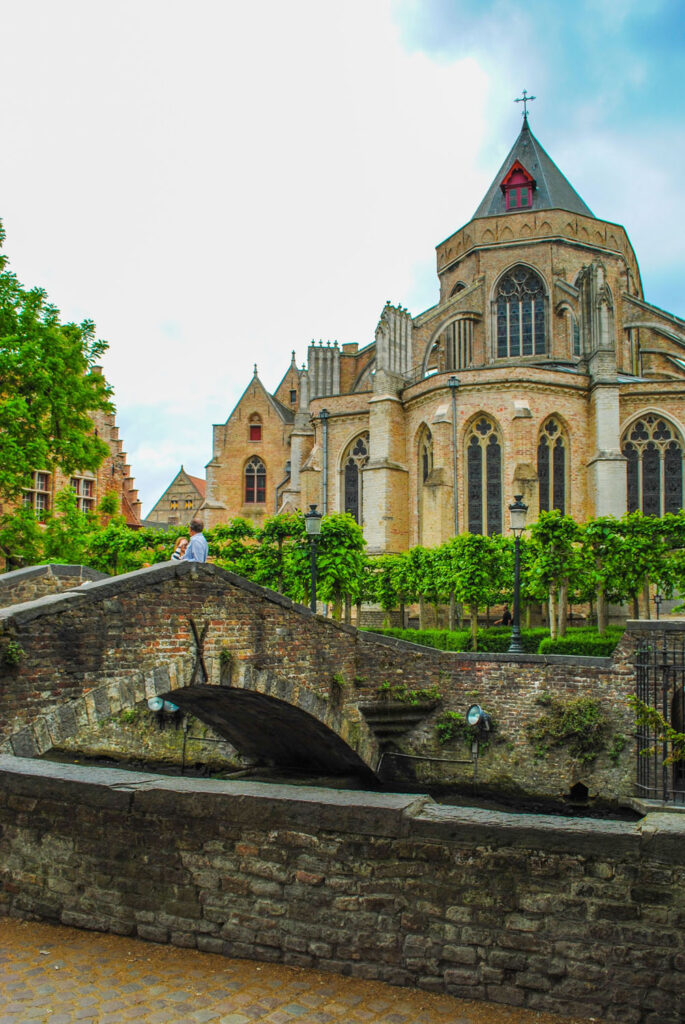
The Church of Our Lady of Bruges
All of the churches in Bruges are enormous. They seem to tower over the tiny houses below. The Church of Our Lady’s tower is over 122 meters high, the highest point in Bruges and the world’s second tallest brickwork tower. Because the church took over two centuries to build, it combines various evolutions of Gothic architecture with a Baroque interior.
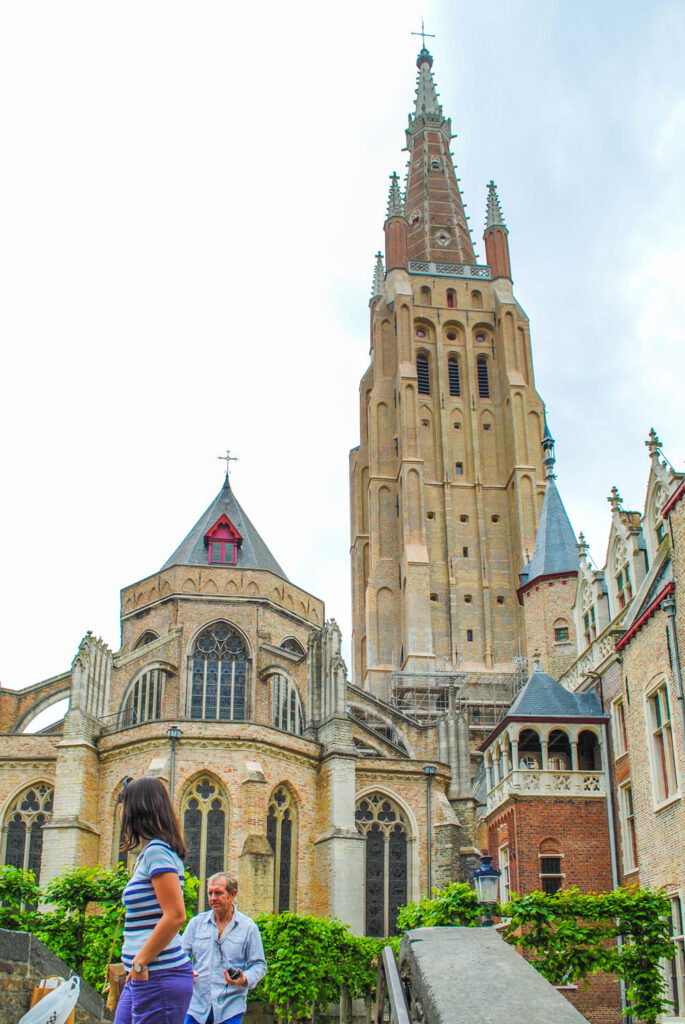
While the interior might not be as grand as its exterior, it is still worth poking your head inside. The central organ is small but opulent, hiding behind the high altar screen. A few dozen simple chairs provide seating for the small but dedicated congregation. The altar screen is unique both in colouring and design. Its white and green coloured marble are highlighted with splashes of gold leafing. Along the nave are columns dotted with reliefs of various influential saints. A sizeable wooden pulpit stands at attention on the right side of the nave; dozens of beautifully carved cherubs hang off the sides, clinging to books with golden scriptures written for the people below to read.
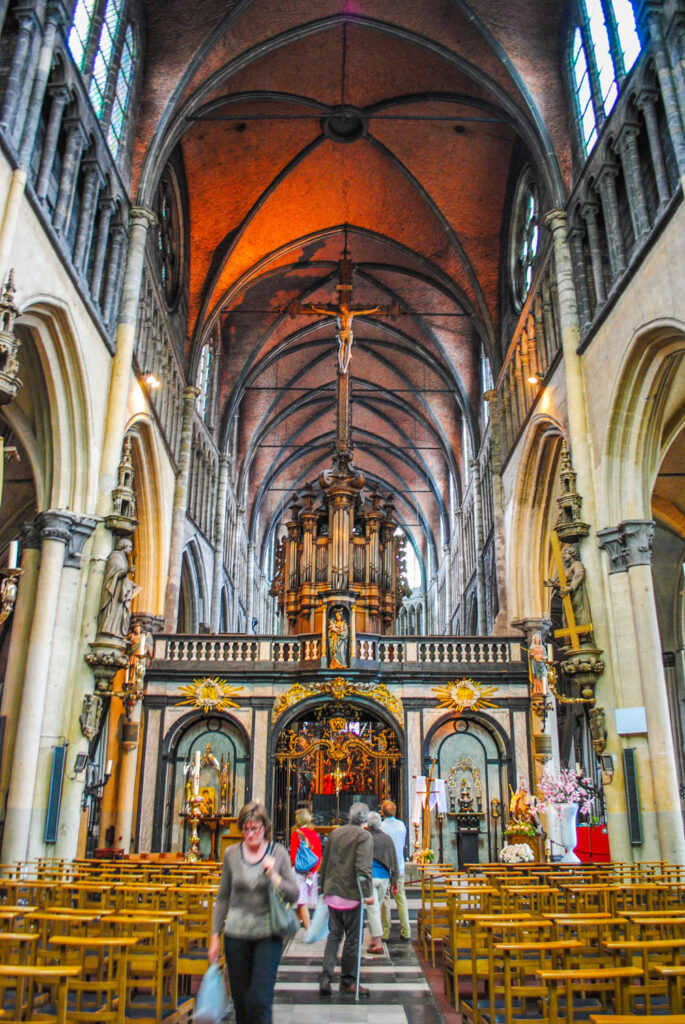
Tombs of Bruges Royalty
Behind the high altar is the resting place of two of Bruges’ most famous residents. The golden tombs of Charles the Bold and the Duchess Mary of Burgundy lie in quiet repose beneath a beautiful tryptic. The elaborately designed tombs are worth looking at, so don’t miss touring the back half of the church.
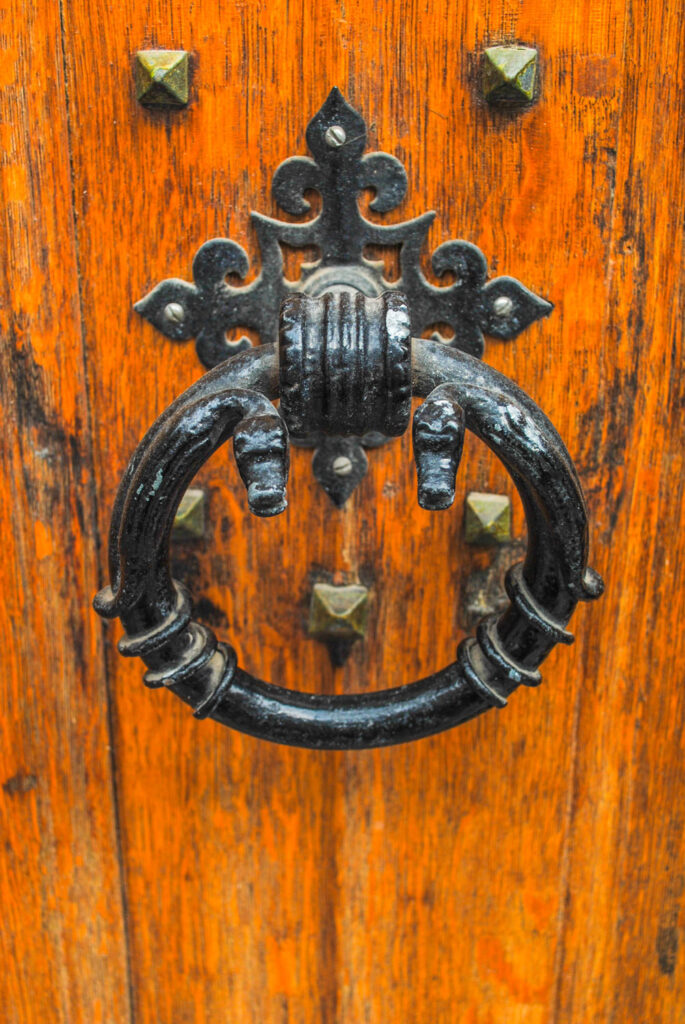
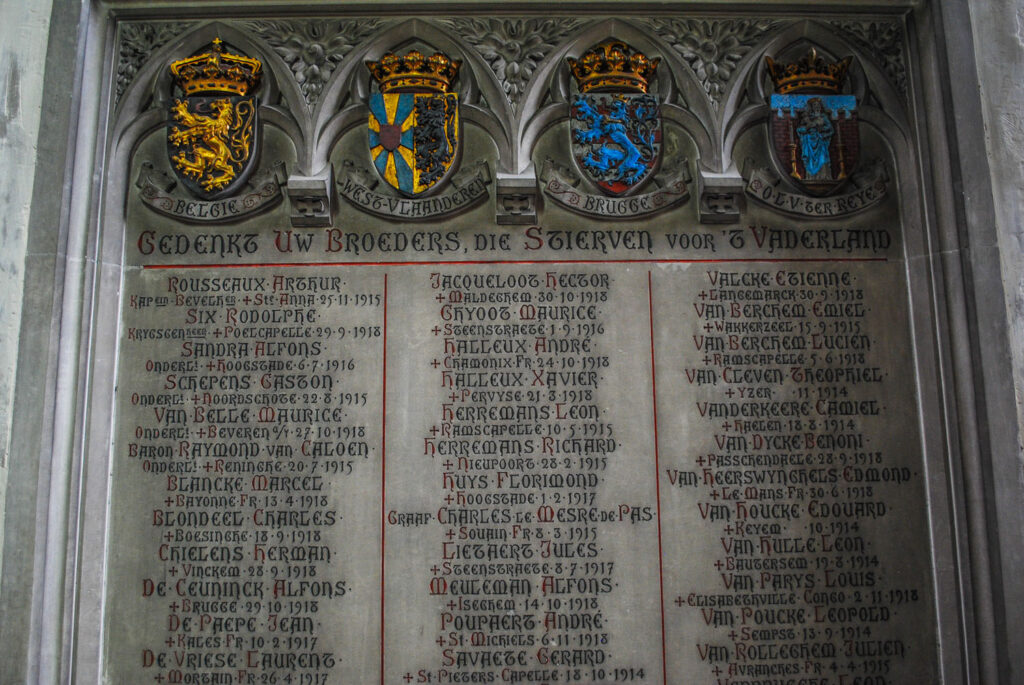
The crown jewel of this church is the white marble sculpture of the Madonna and Child, created by Michelangelo in 1504. Over the years, the statue has been stolen by foreign invaders, but those dedicated to preserving its place in Bruges have always managed to bring it back home. Although this sculpture doesn’t have the same impact as his Pieta in Rome, the sadness on Madonna’s face reflects her knowledge that this little boy will grow up only to die for the sins of his people.
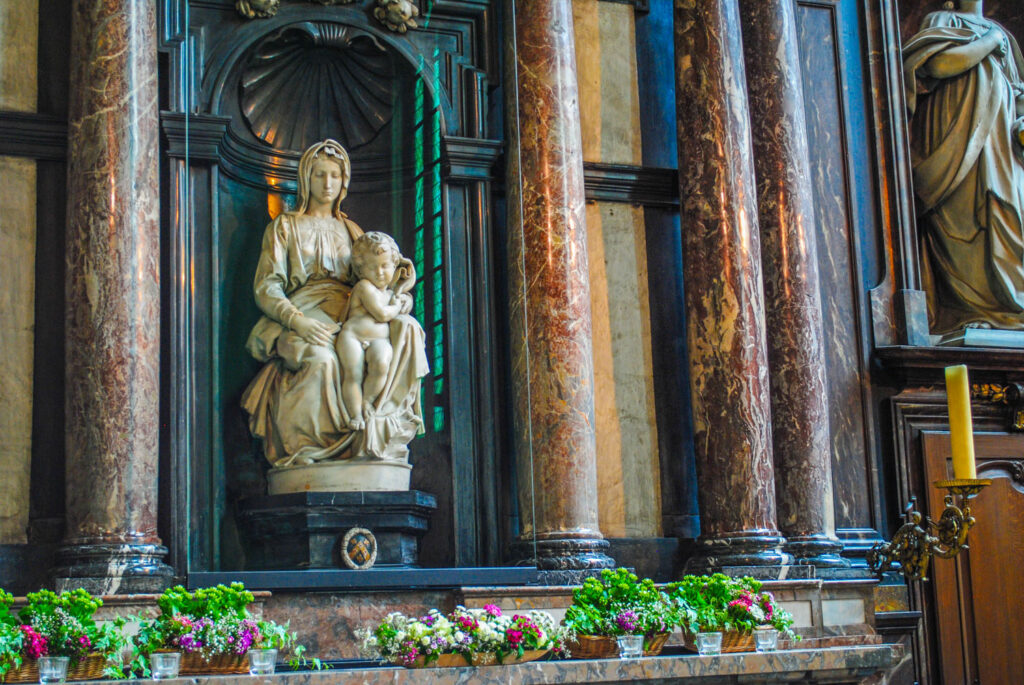
Gruuthuse Hof
Away from the Church of Our Lady is the Gruuthuse Hof, a small but historic house adorably sandwiched between two major streets. Now a restaurant, the Gruuthuse Hof is one of the oldest residences in Bruges. While in one of the prime locations for tourists, the restaurant keeps a simple, traditional menu catering to locals and tourists alike. With only 28 seats inside and 12 on the patio, the place remains intimate despite its popularity over the eras. If you can find a table, it’s worth stopping in for the featured meal of the day.
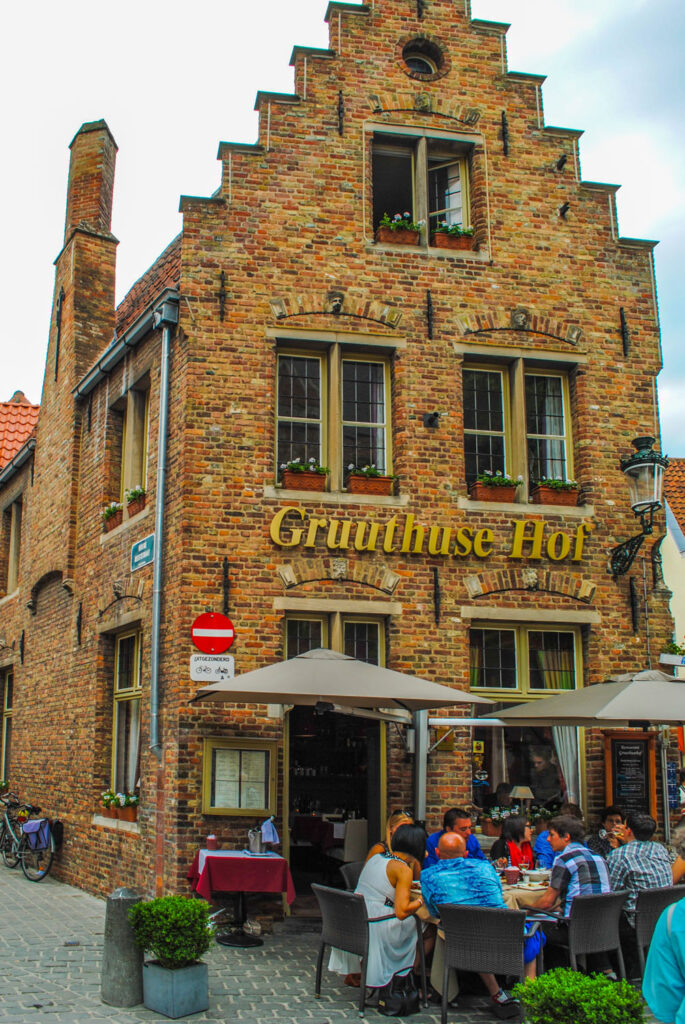
St. Salvator’s Cathedral
Up from the Gruuthuse Hof is St. Salvator’s Cathedral. It is the oldest parish church in Bruges, with parts dating back to the 10th century. But the original design was much less grandiose than the current incarnation. In 1834, after Belgium’s independence, St. Salvator’s was given the status of a cathedral, and the meagre church had to be extensively renovated to match its new high status as a cathedral.
The architect of the new cathedral was William Chantrell, an English architect greatly influenced by the resurgence of Neo-Romanesque architecture. Neo-Romanesque buildings feature thick walls, round arches, sturdy pillars, barrel vaults, large towers, and decorative arcades. This church stands out because most of Bruges is so powerfully Gothic.
St. Salvator’s Cathedral Interior
The neo-Gothic interior of the church is relatively plain but is accented with stunning embroidered tapestries from the 18th century. These antiquated works of art were made in Brussels by Jasper van der Borcht and feature astounding scenes from the Bible, all created with needles and thread.
To the left of the nave, the pulpit is a stunning example of Louis XVI’s designs. Louis XVI’s design was predominantly produced in France and exemplified the last phase of Rococo design. The style focused on natural forms and dramatic embellishments.
Old St. John’s Hospital
Walking back down Mariastraat, we come upon Old St. John’s Hospital, now the Memling Museum. Before becoming a museum, it was used as a hospital for the sick and dying, administered by nuns and priests. Inside are many relics and six paintings by a 15th-century painter and Bruges resident, Hans Memling. One of the highlights inside is the Shrine to St. Ursula. Carved into a gilded wooden reliquary in the shape of the church are six panels which tell the story of St. Ursula’s sainthood, painted by Memling himself. The work was commissioned by the Hospital of St. John and is one of the most exquisite pieces of religious art I’ve seen close up. The three-dimensional details and rich colours are remarkable.
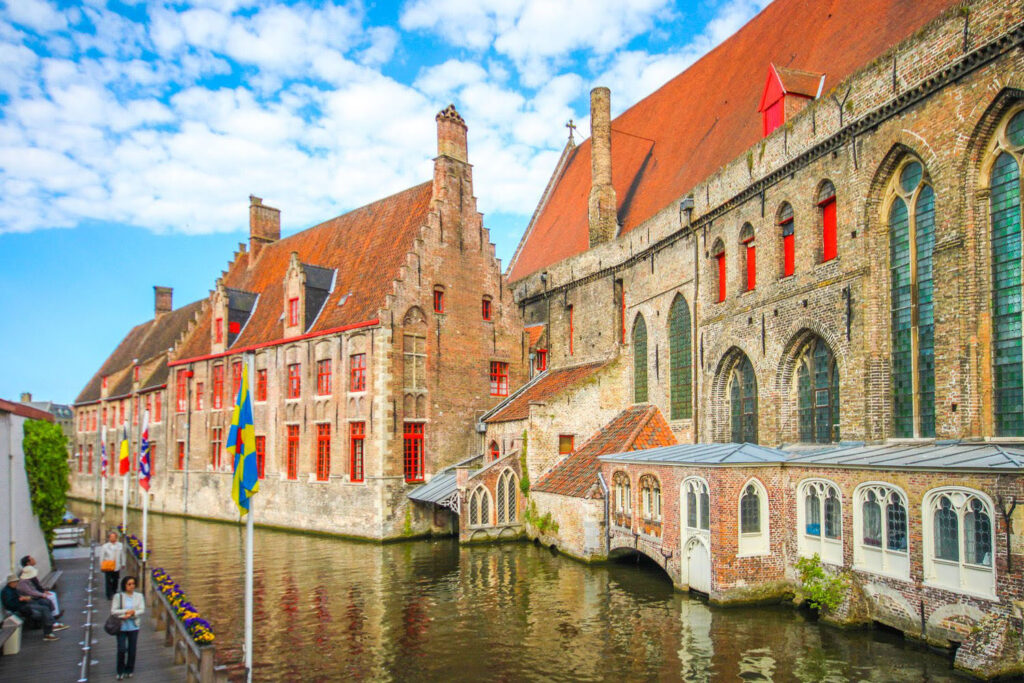
De Vos Almshouse
Further south, away from the central part of the city, we will come across the “De Vos Almshouse.” This small grouping of little white houses, facing a lush green herb and flower garden, once housed the poor, widows and the elderly. The houses were purchased by a wealthy Brugian merchant who loved his city and wanted to give back to the less fortunate.
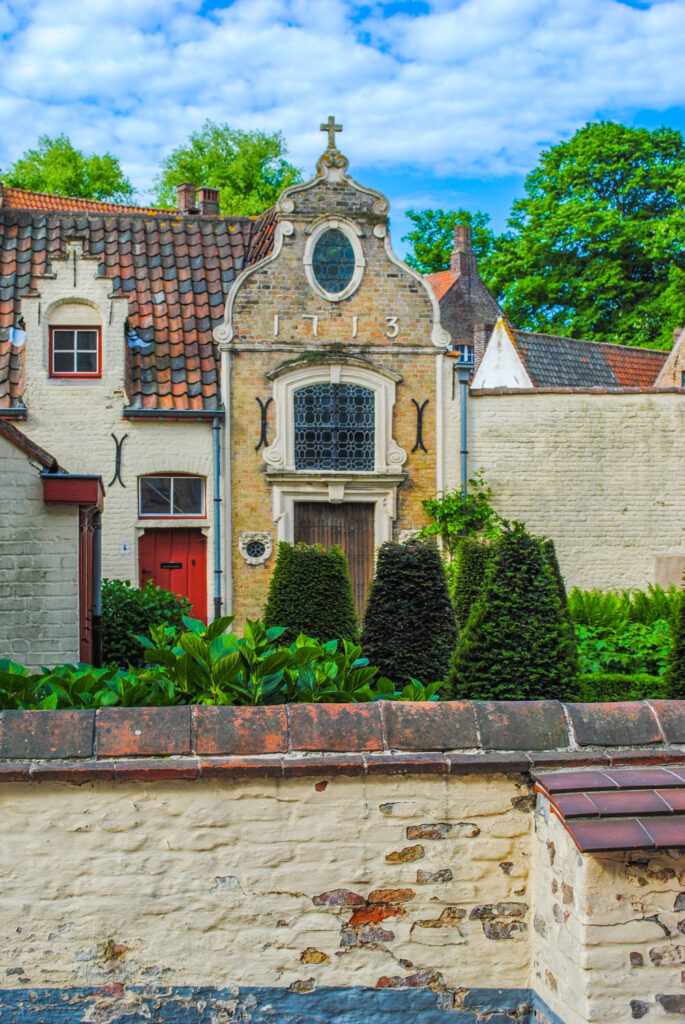
Each home was donated to a specific guild (mason’s guild, blacksmith, coopers, etc.) and would provide housing for members of that guild when they became too old to work, fell ill or lost their jobs. You might notice how none of the houses have windows facing the street – this was because, at the time of their construction, a tax was improvised for any street-facing window.
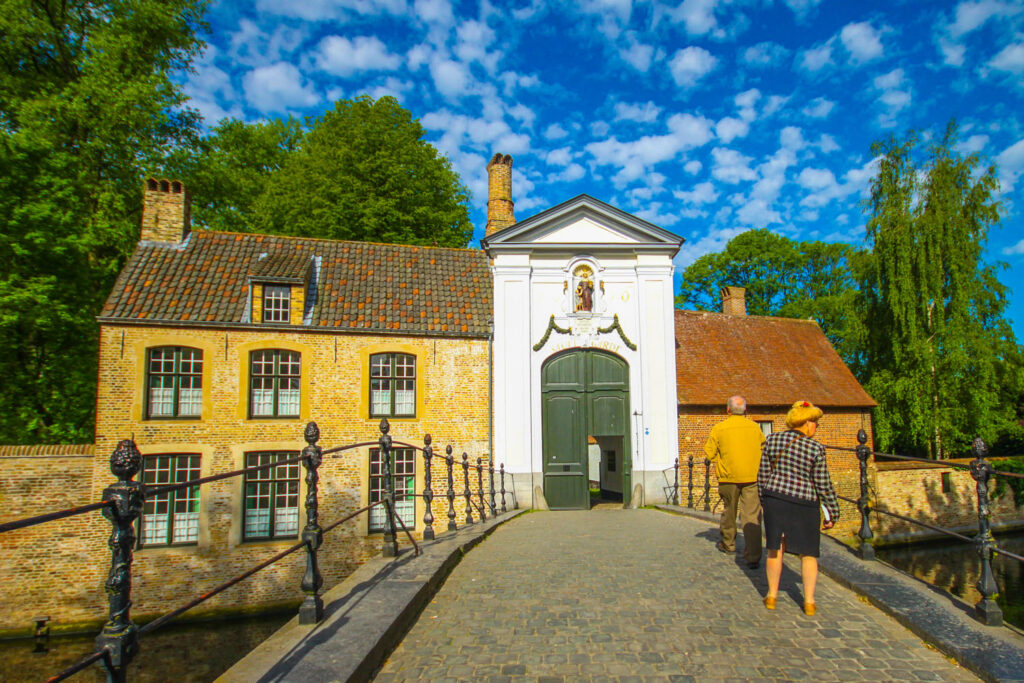
Beguinage
Before our final destination, stop into the Beguinage’ De Wijngaard’ or Vineyard. This grouping of white houses with terracotta roofs is one of Bruges’s most peaceful places to rest your weary feet. So far from the town centre, this site is little toured by day-tripping tourists.
Since 1245, the Bruges beguine sisterhood has lived here, and in 1937, it became a monastery for the Benedictine sisters. To enter the Beguinage, you first pass through a large arched entrance gate built in 1776. Inside, you find houses dating from the 15th to 19th centuries.
The Minnewater
The Minnewater, or Lake of Love, is one of the most beloved retreats for the remaining residents of Bruges. Swans float up and down the picturesque canals, and lovers roam under the densely forested pathways, arm in arm.
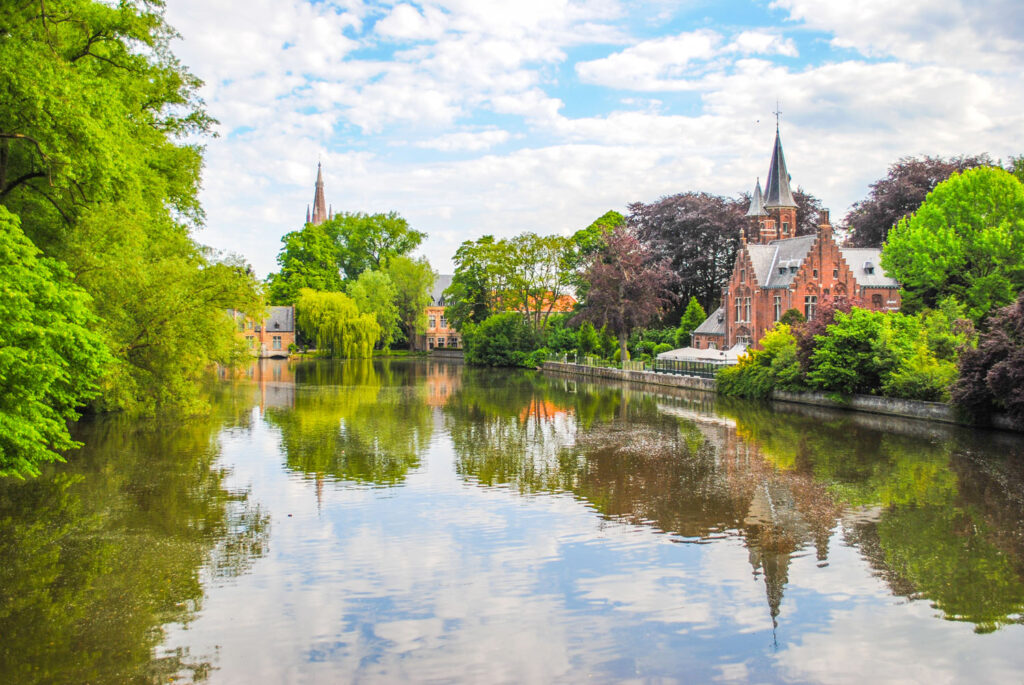
Poertorenpark
Poertorenpark, or Gunpowder Tower Park, is a serene spot near the picturesque Lake of Love in Bruges. The park features a striking round tower, historically used to store gunpowder, which reminds of the city’s medieval past. Surrounded by lush greenery and peaceful walking paths, Poertorenpark offers a tranquil escape from the bustling city center. Visitors can enjoy a leisurely stroll, relax on the benches, and take in the scenic views of the tower and the surrounding landscape, making it an ideal location for a quiet afternoon.
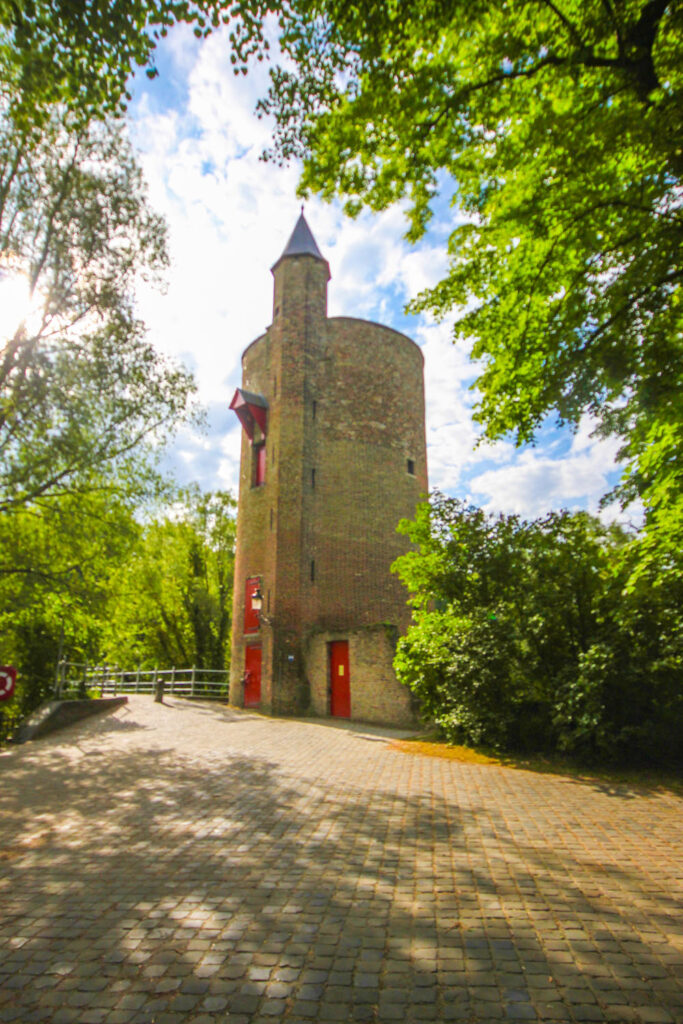
Huisbrouwerij De Halve Maan
To end your last day in Bruges, head to Huisbrouwerij De Halve Maan. This historic brewery is known for its rich brewing tradition, which dates back to 1856. This family-run brewery has produced some of Belgium’s most beloved beers for generations, including the renowned Brugse Zot and Straffe Hendrik. Visitors to De Halve Maan can enjoy guided tours that offer insights into the brewing process, the brewery’s history, and the unique beer pipeline that runs under the streets of Bruges, transporting beer from the brewery to the bottling plant outside the city.
The tour concludes with a tasting session, allowing guests to savour the distinct flavours of De Halve Maan’s craft beers while enjoying panoramic views of Bruges from the brewery’s terrace. The best way to soak in the last scenic views of the city.
Bruges is a stunning city with a unique history, culture, and beauty blend. With the help of this 2-day itinerary, you can make the most of your time in Bruges and experience all this charming city has to offer. From exploring the stunning architecture and picturesque canals to sampling delicious Belgian chocolates and local beers, there’s something for everyone in Bruges.
Happy Travels, Adventurers!
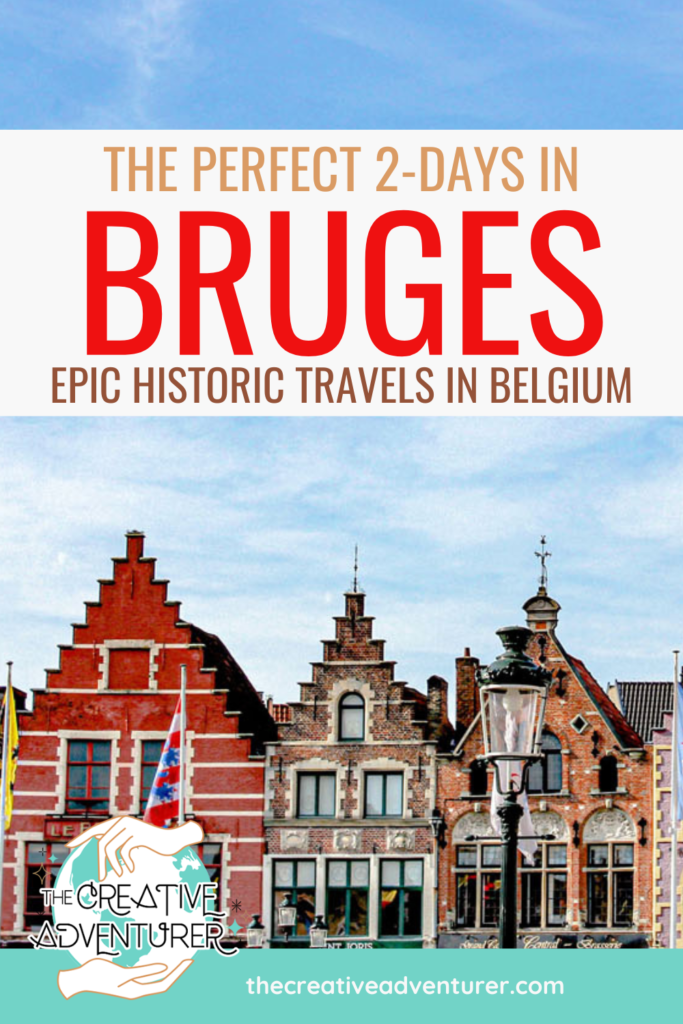
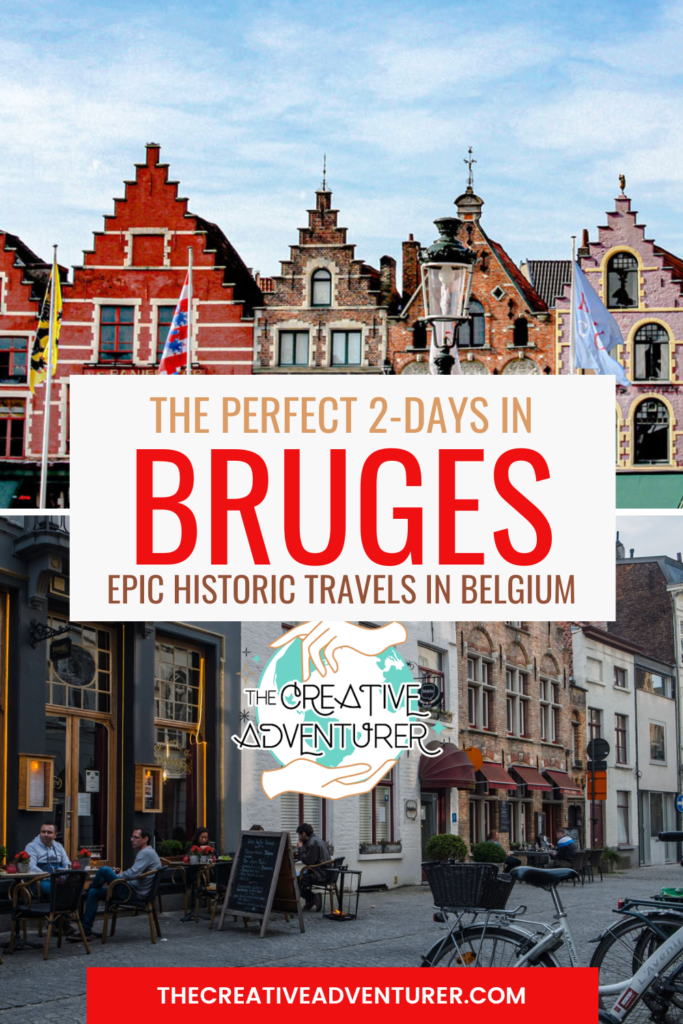
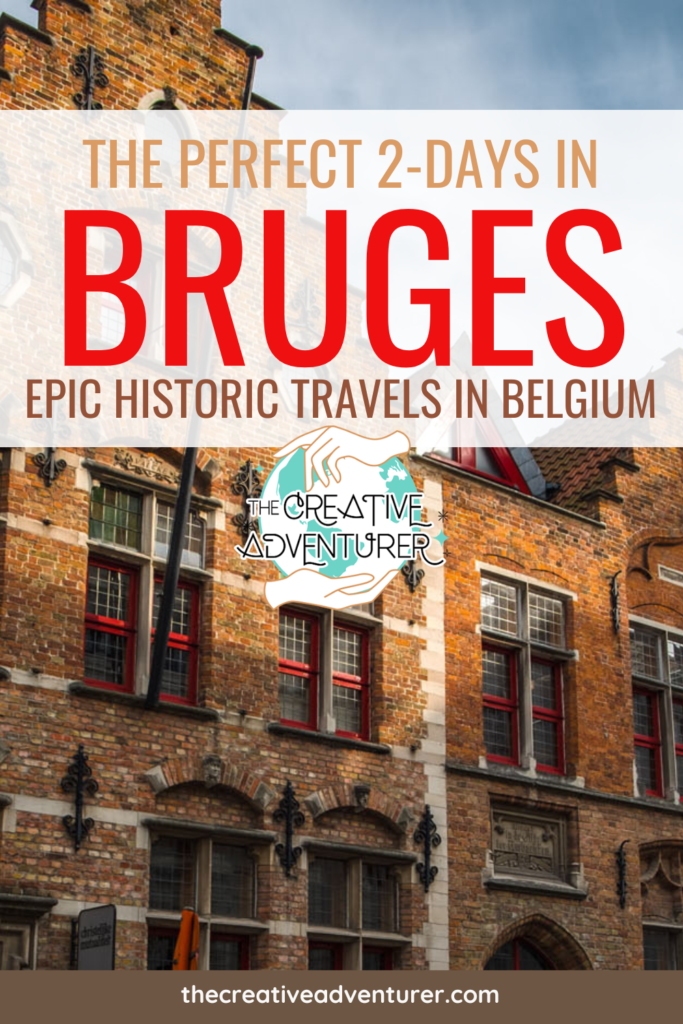
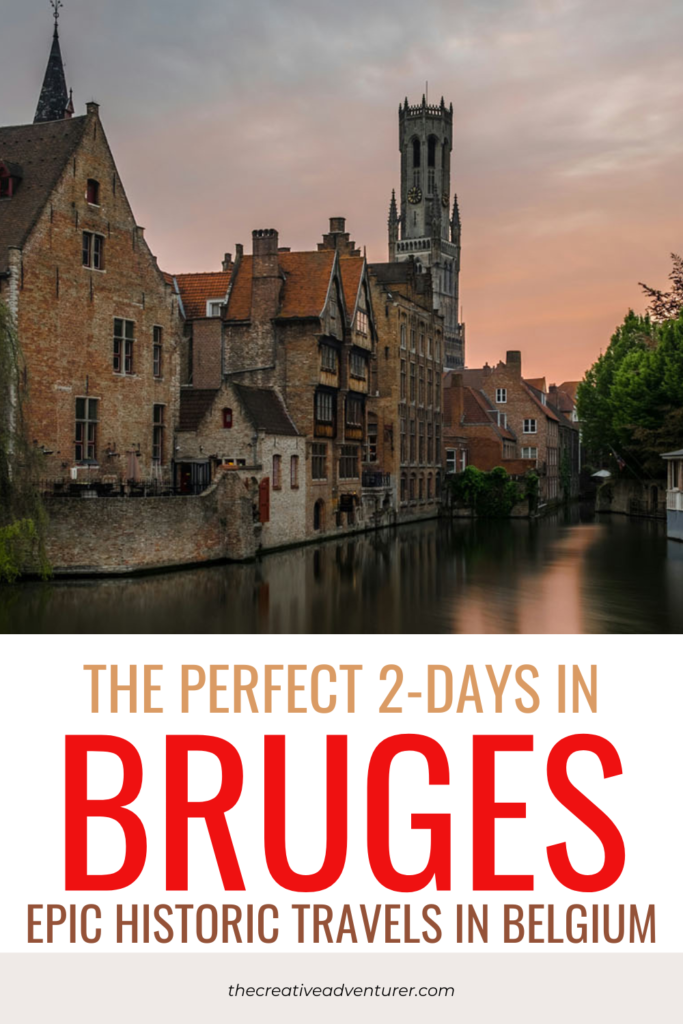
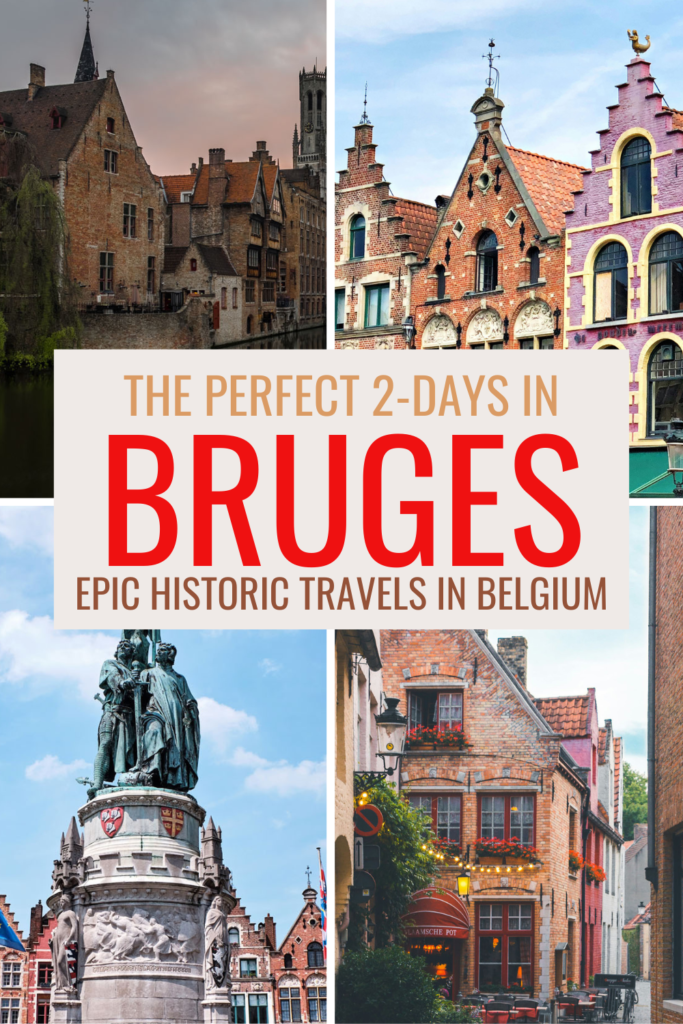
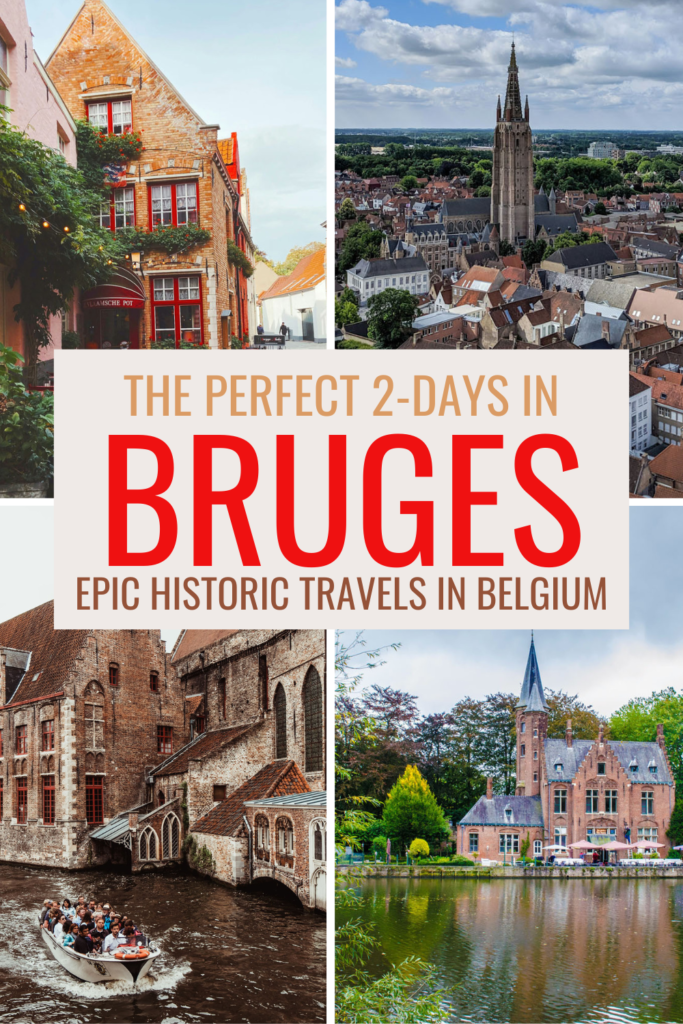


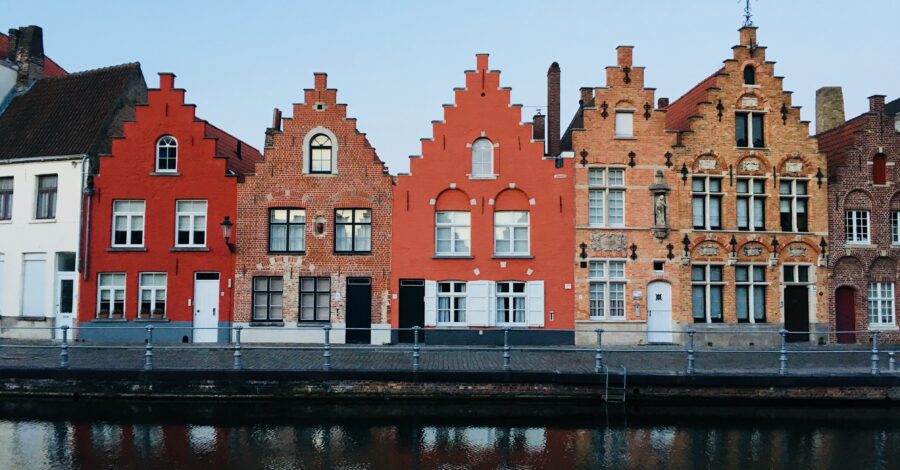
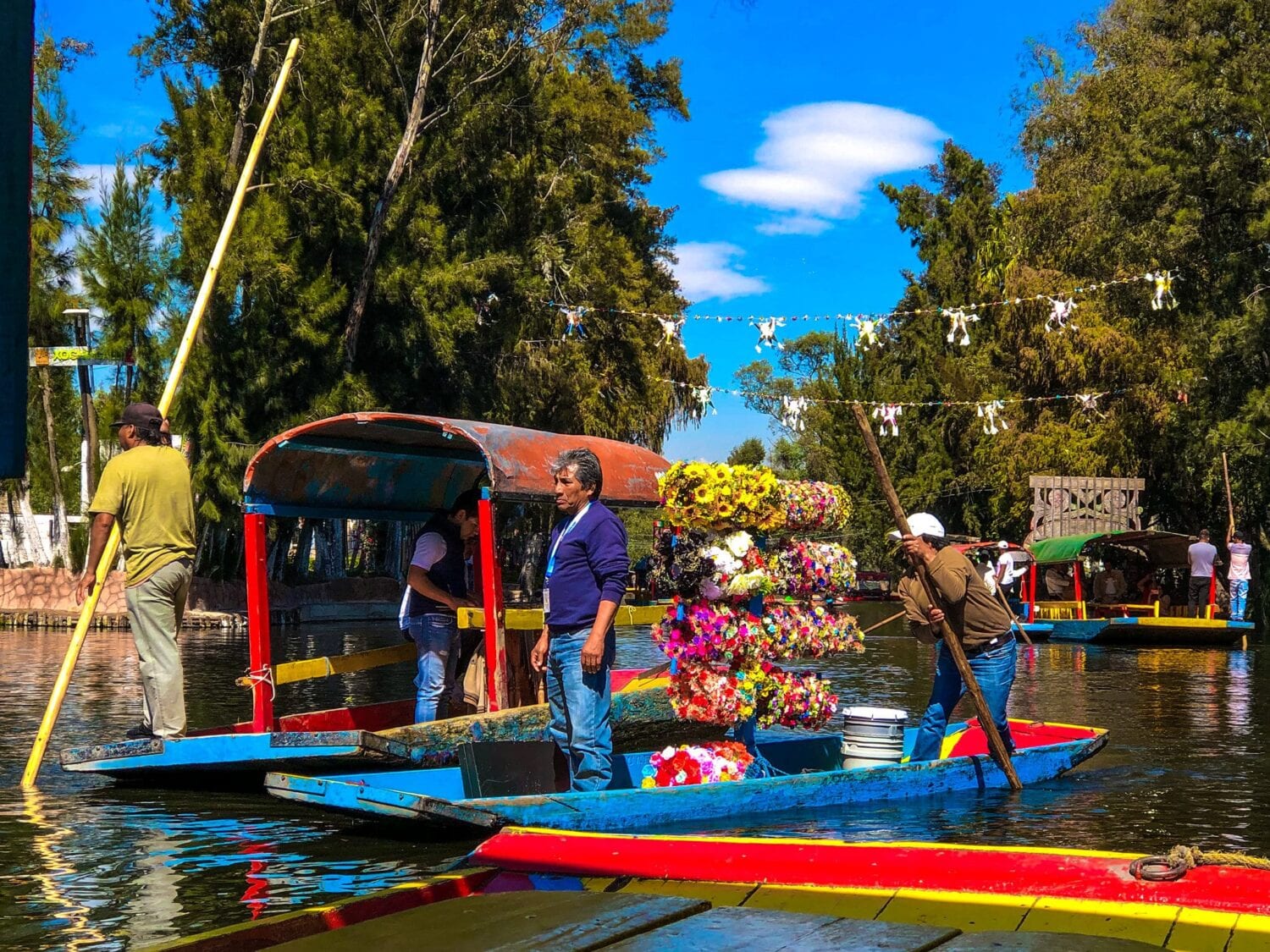
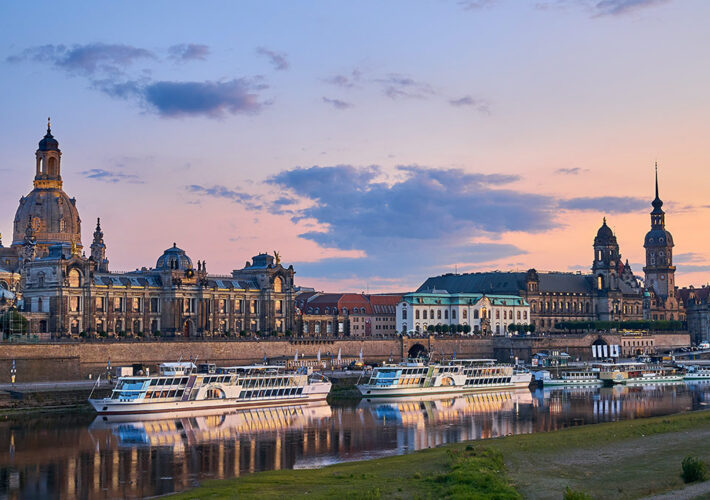
Leave a Comment